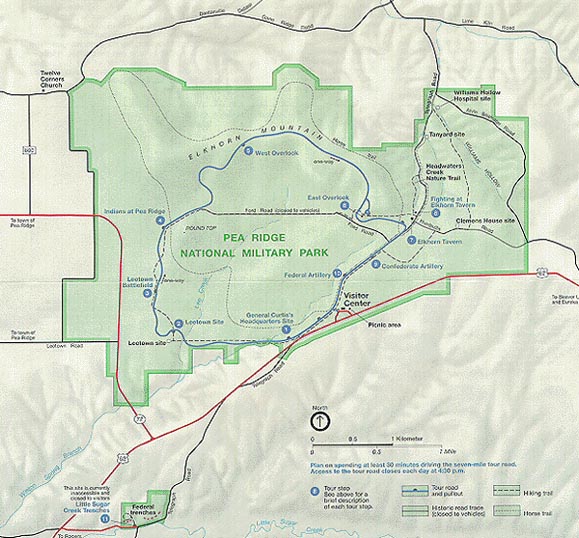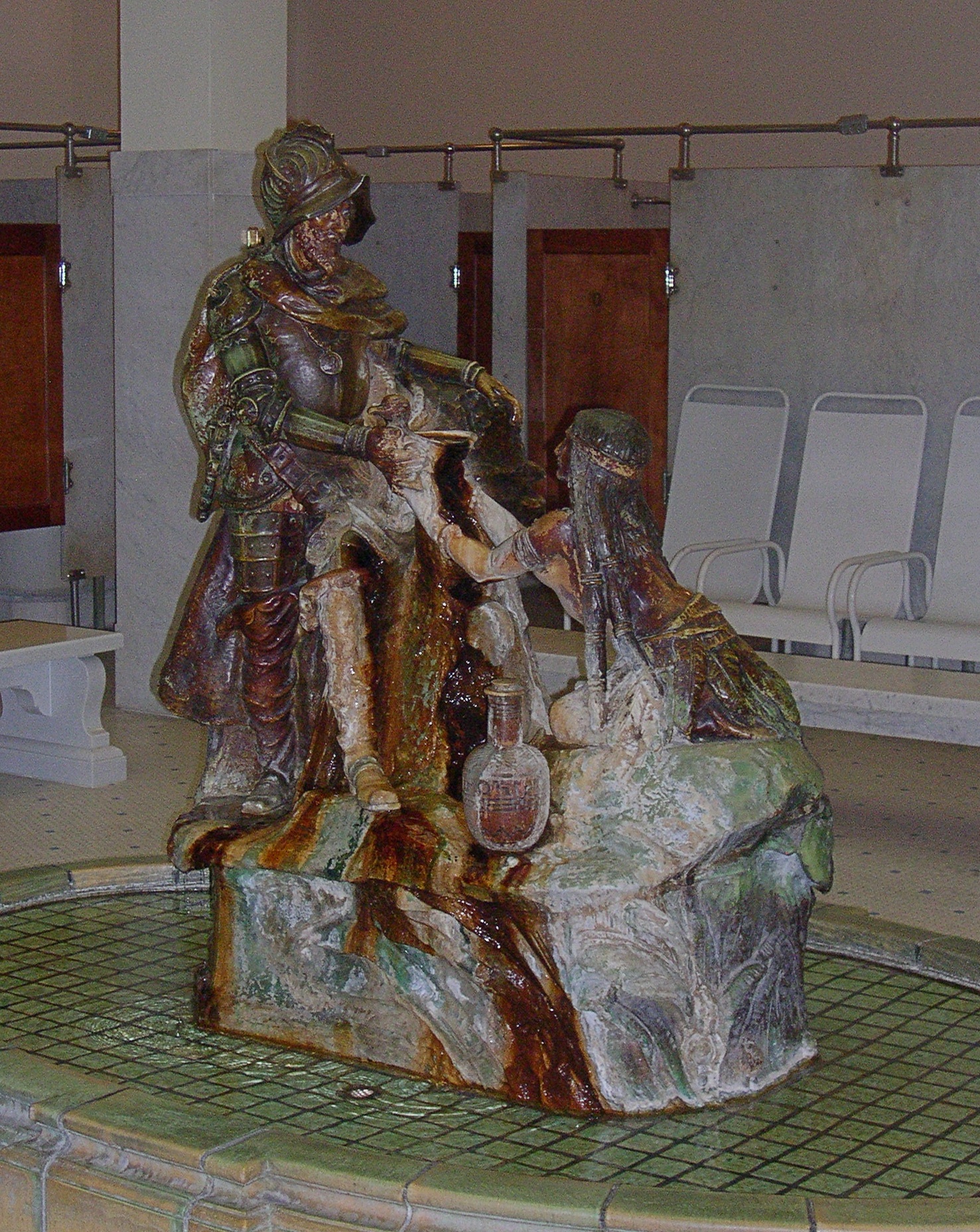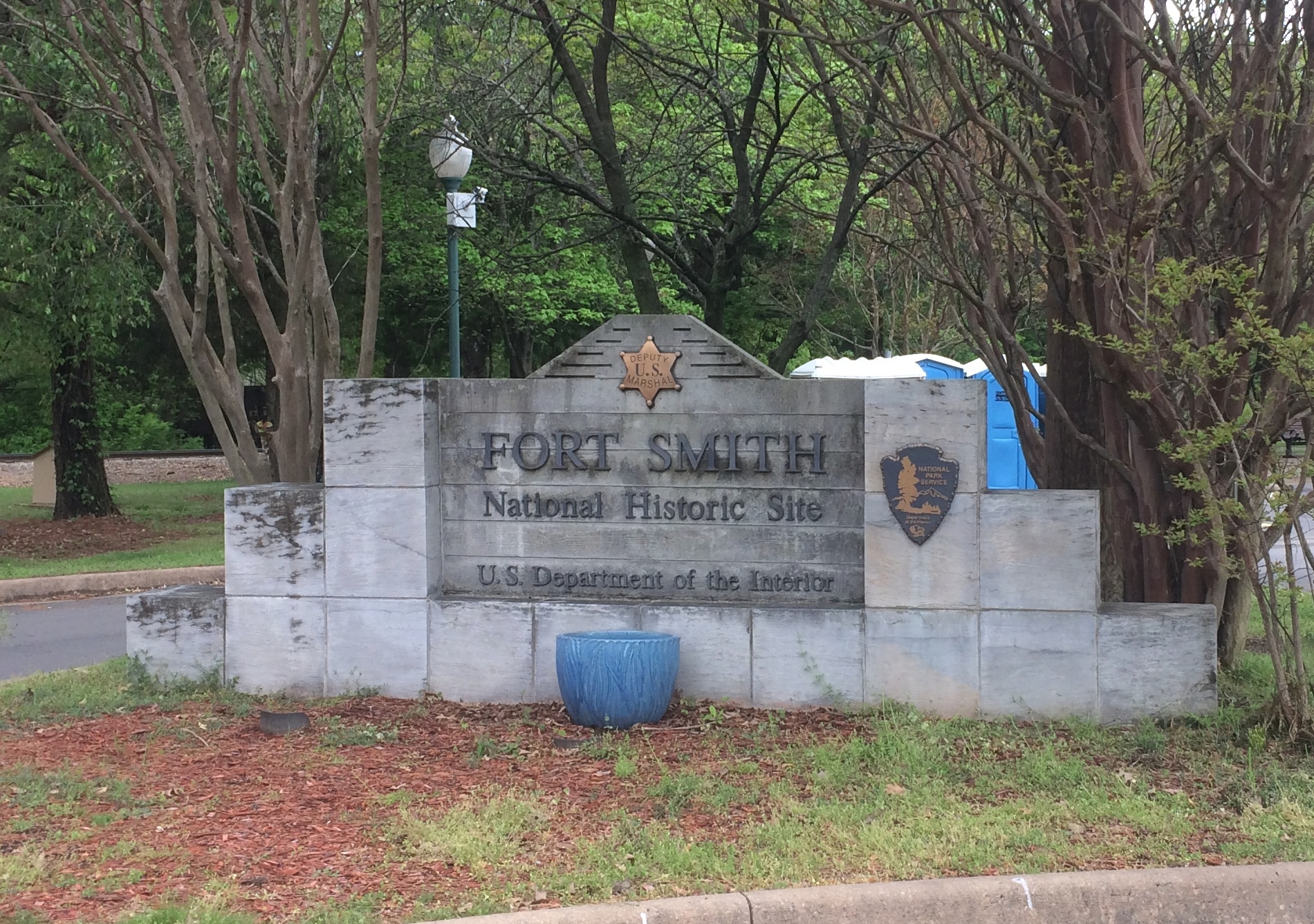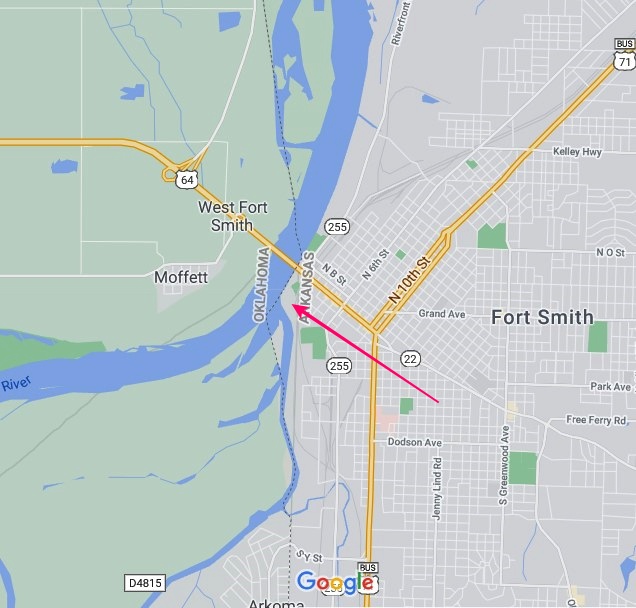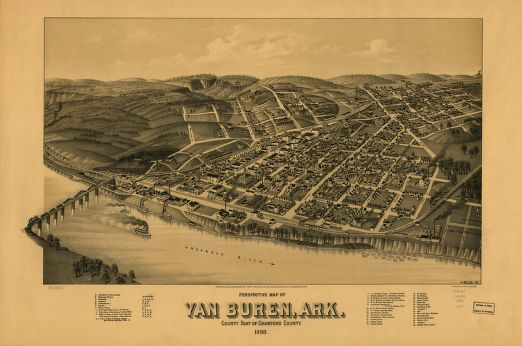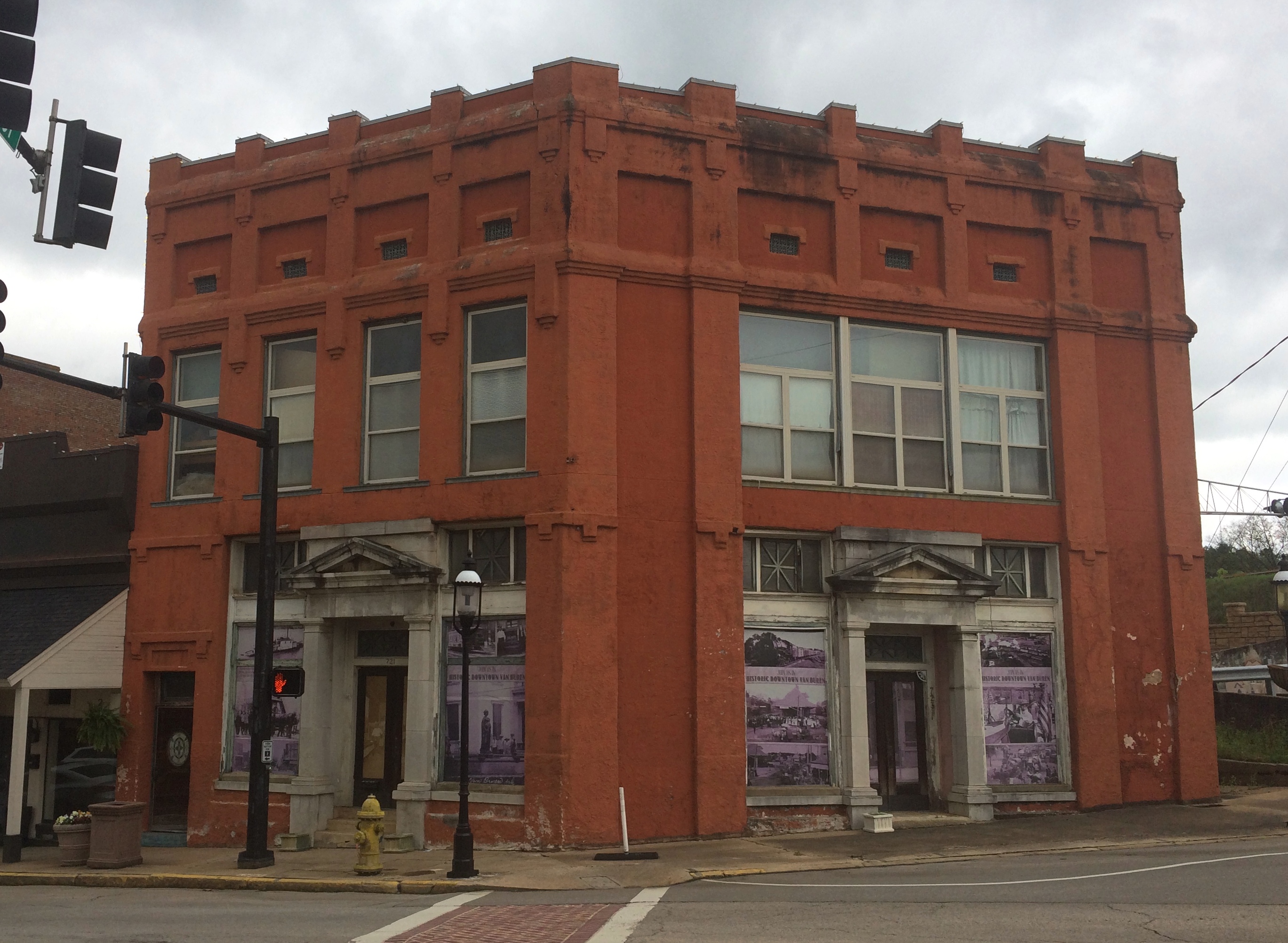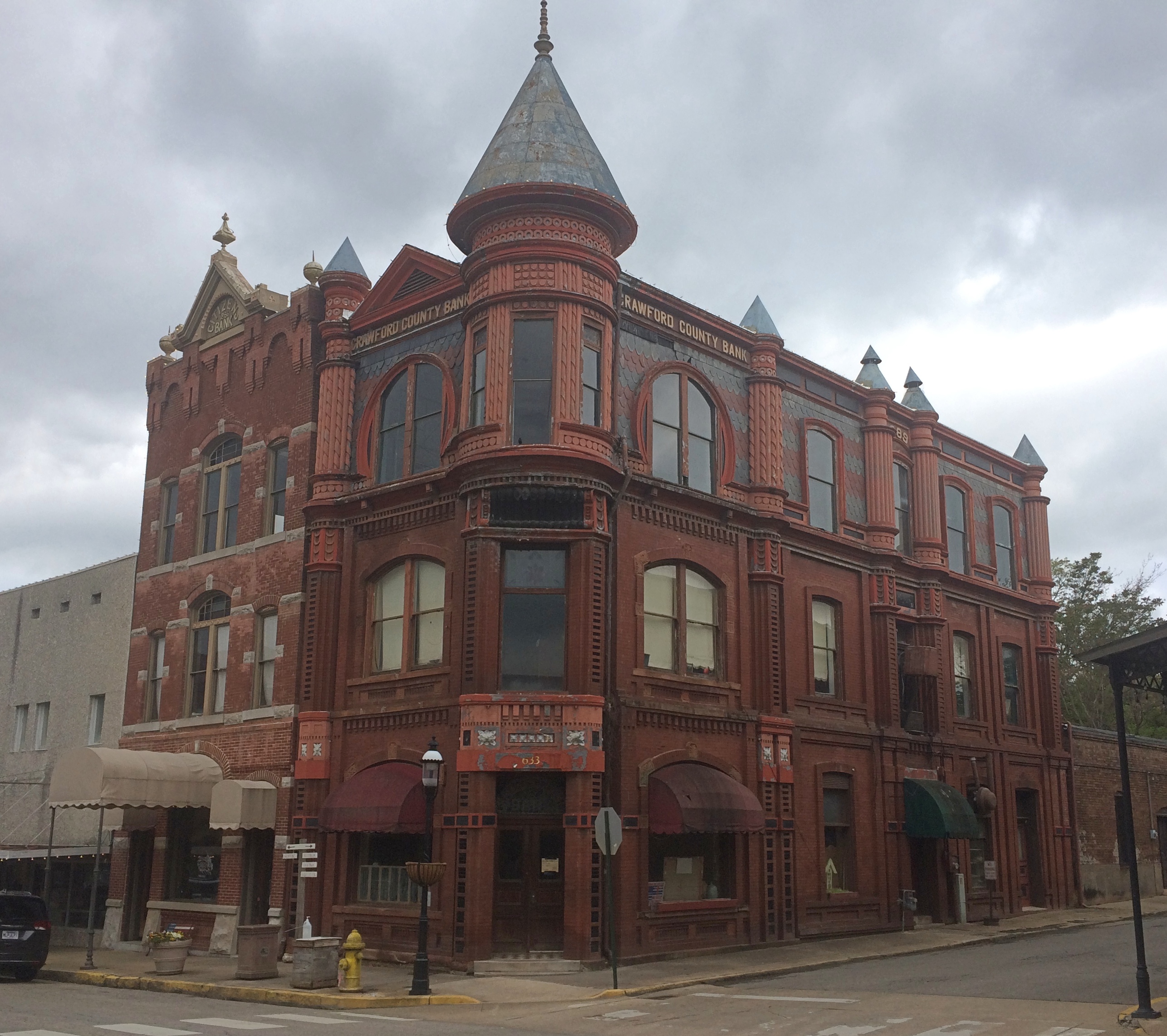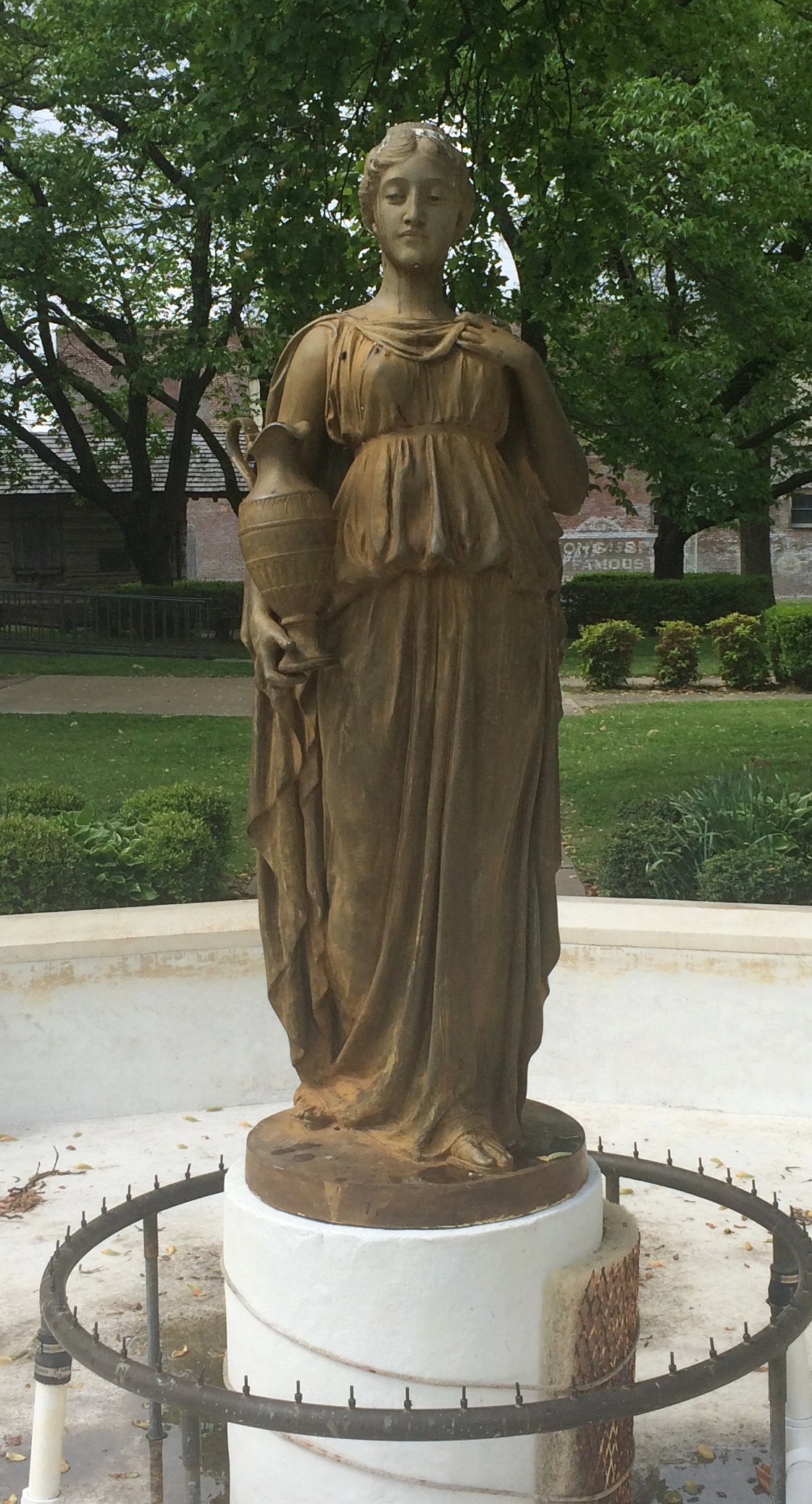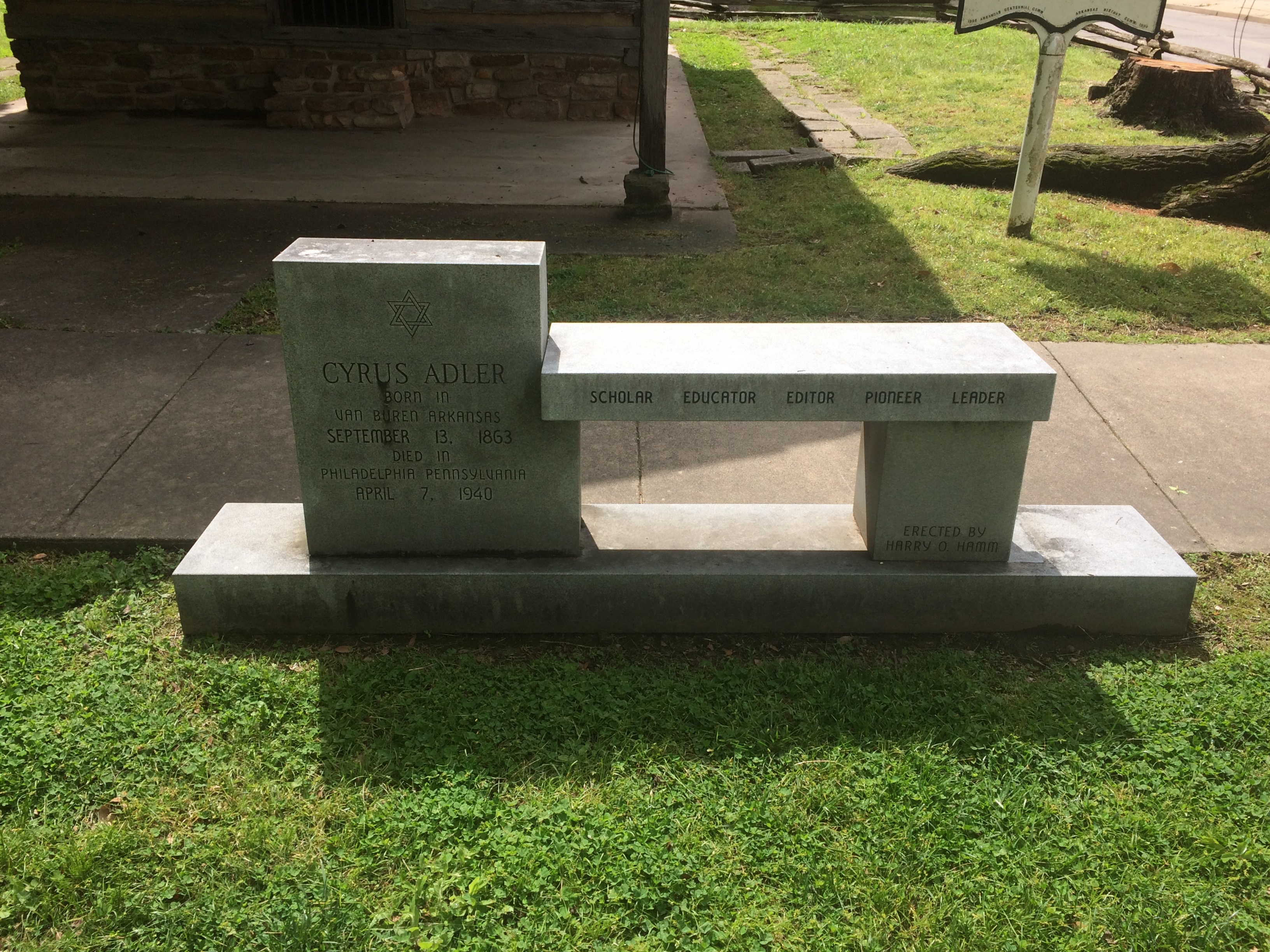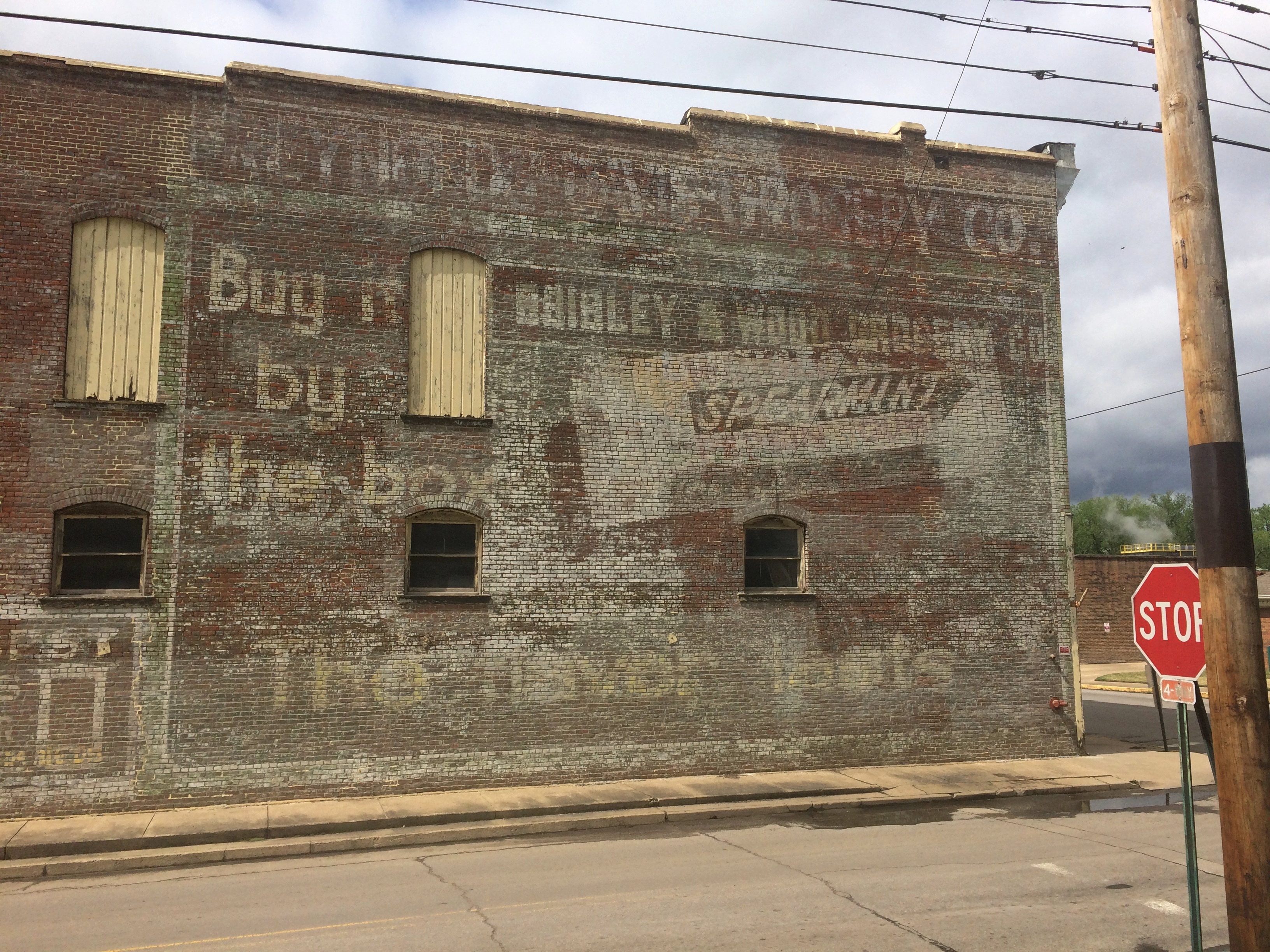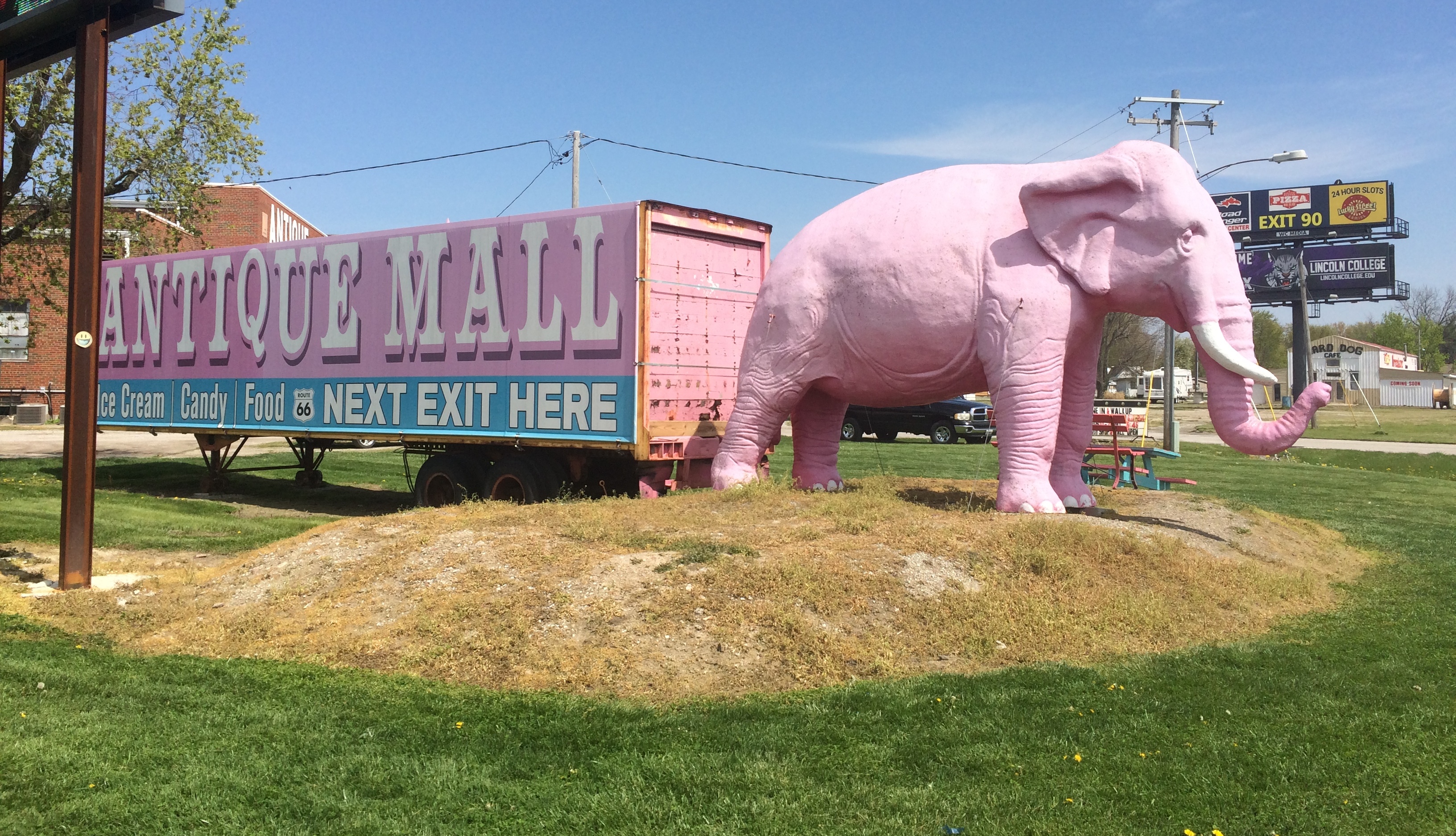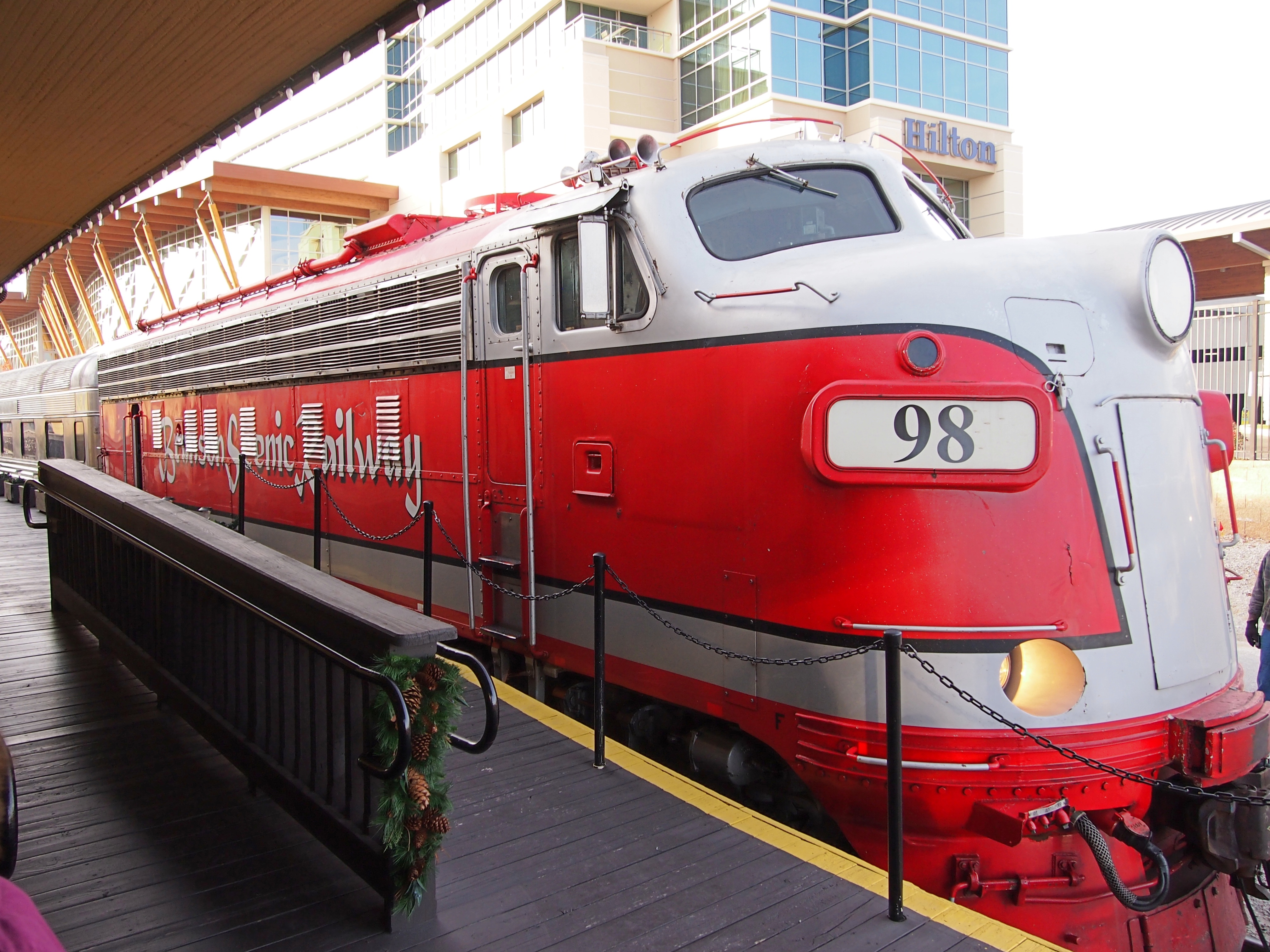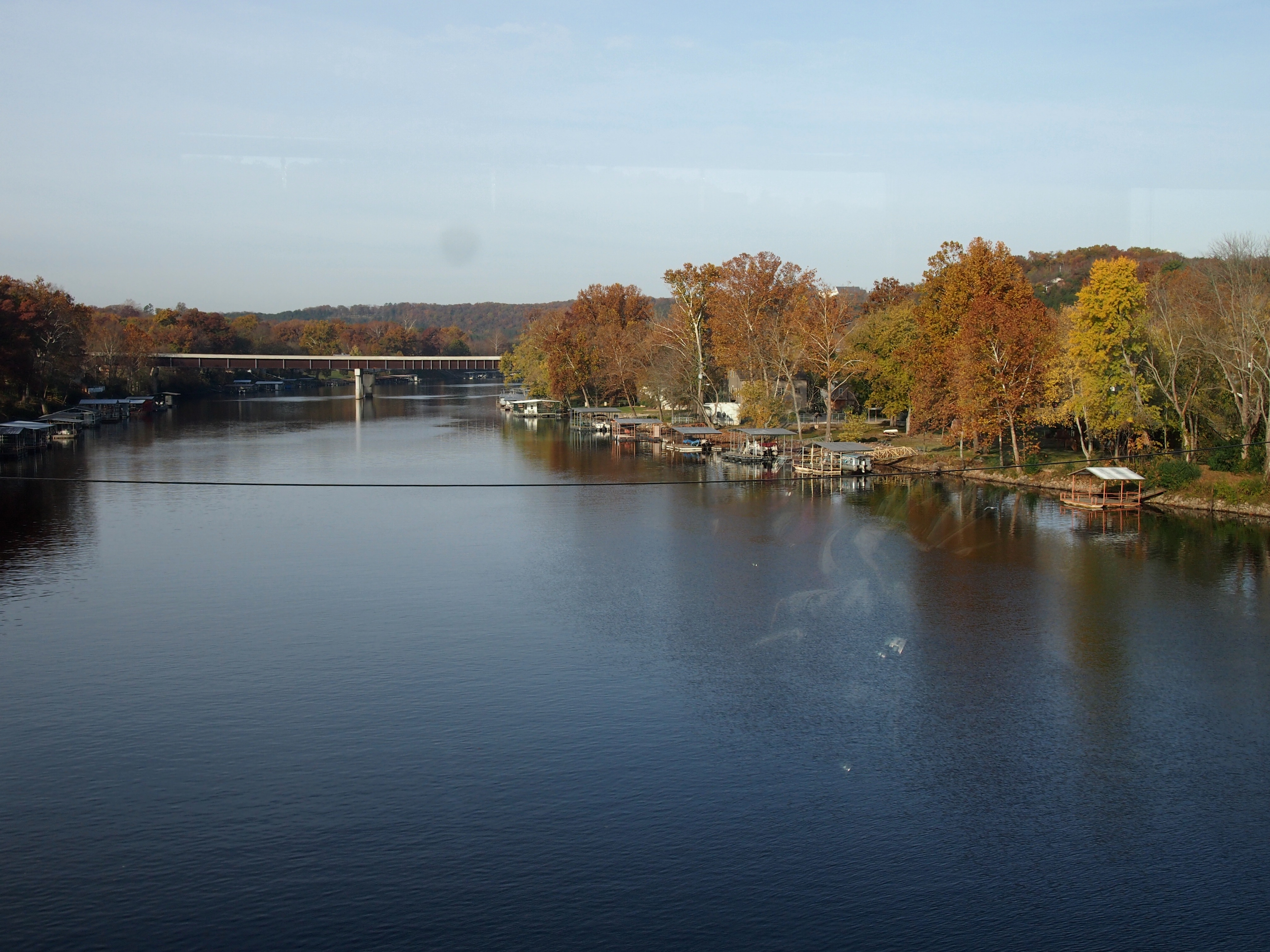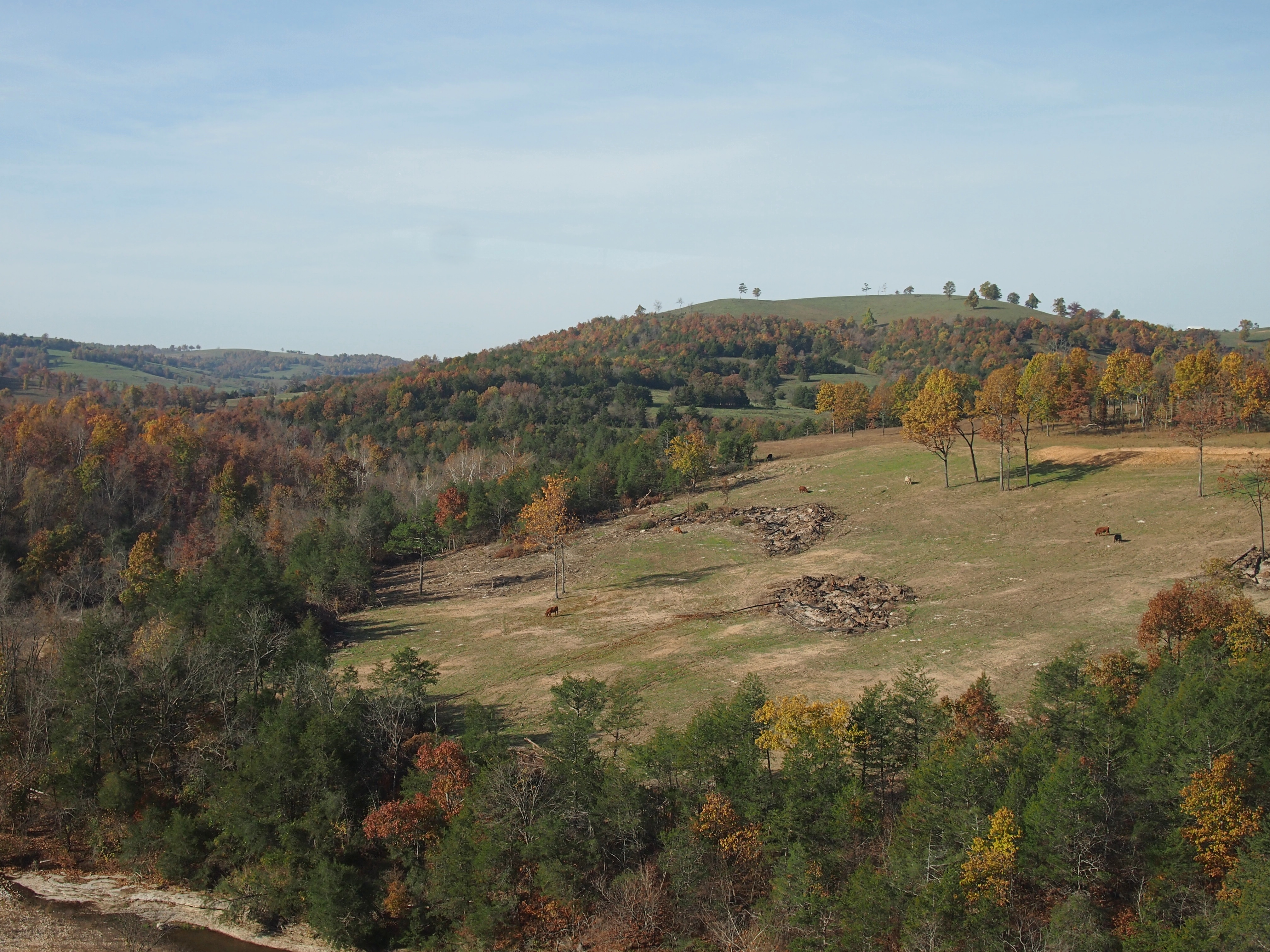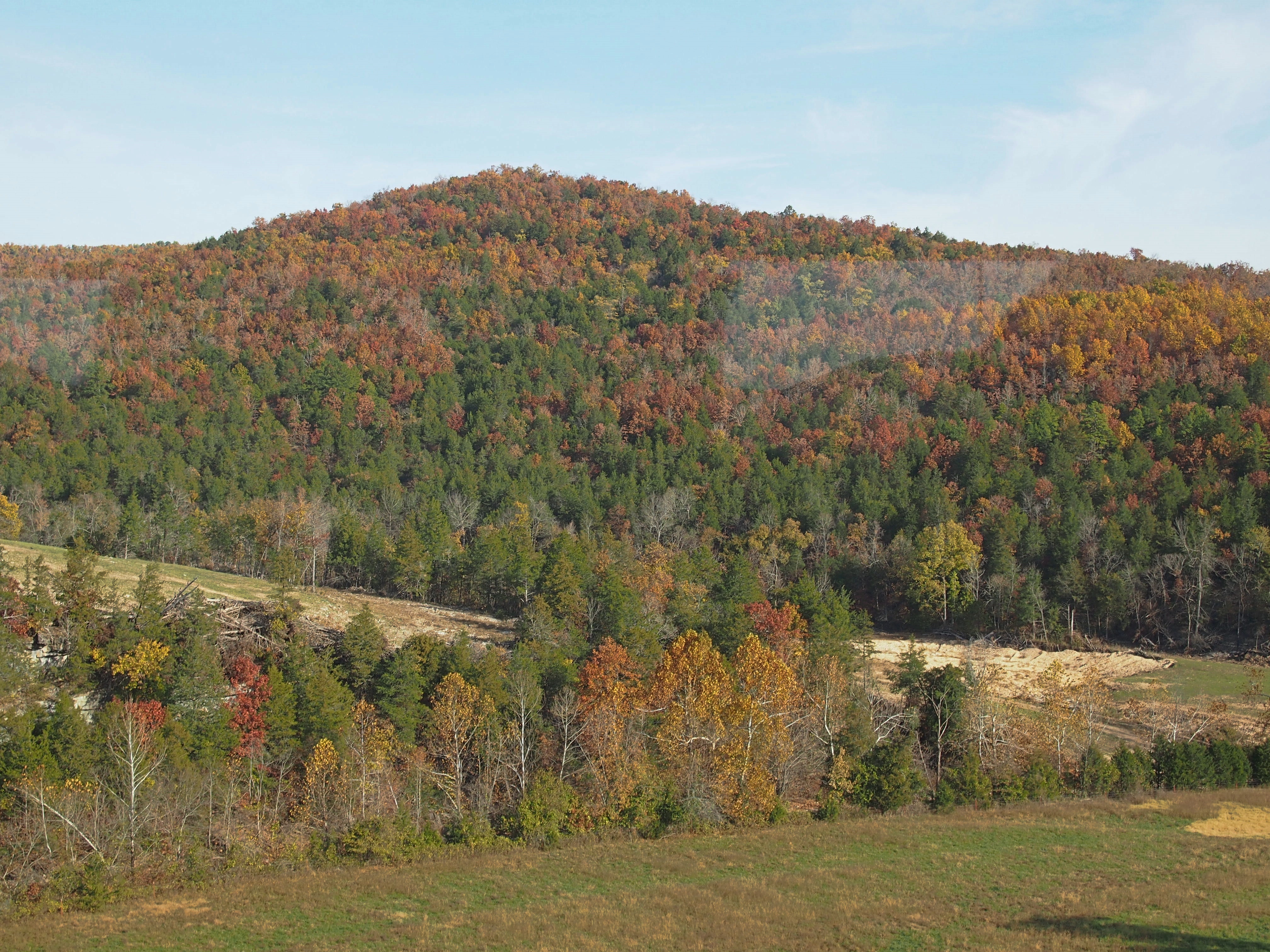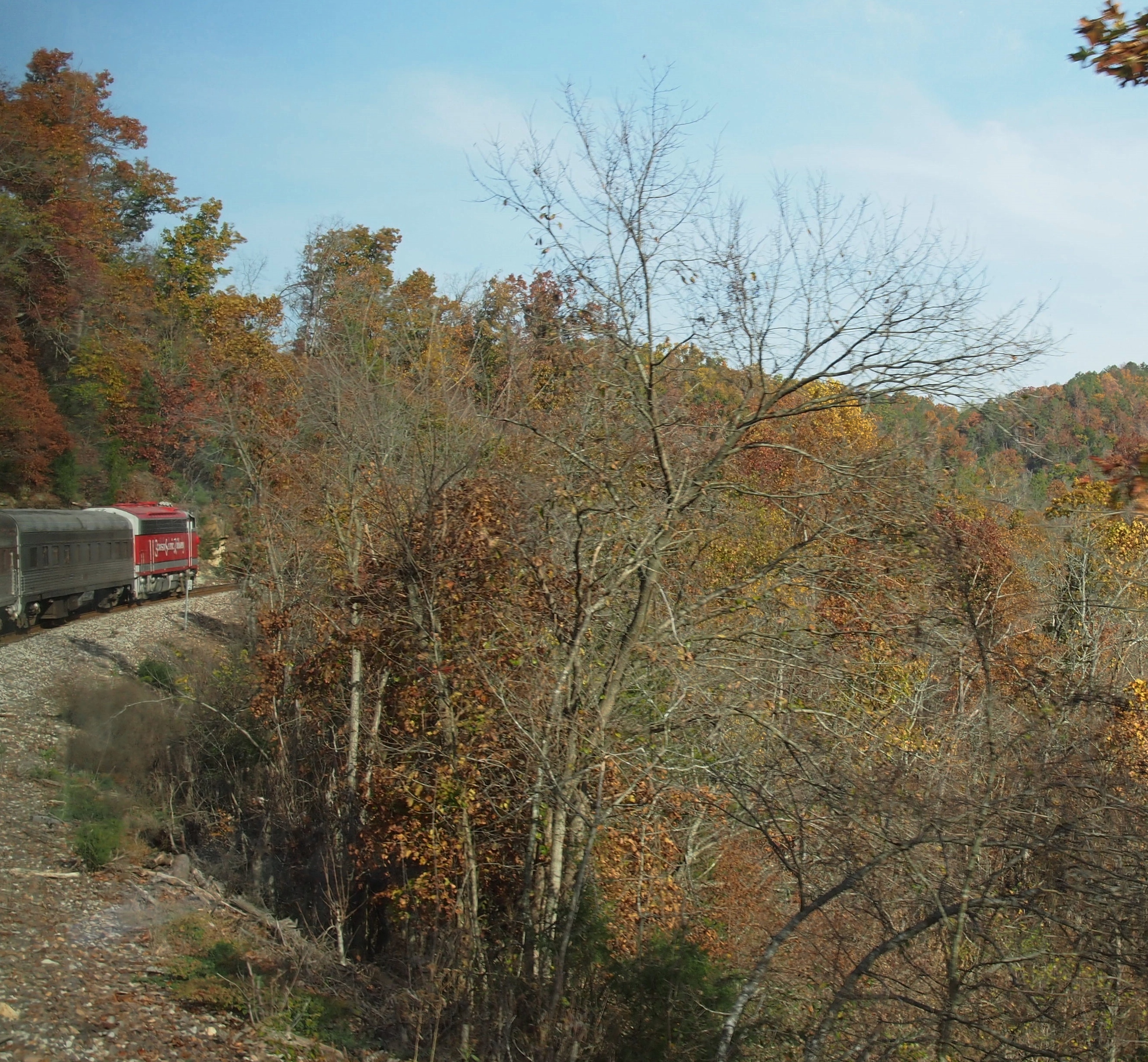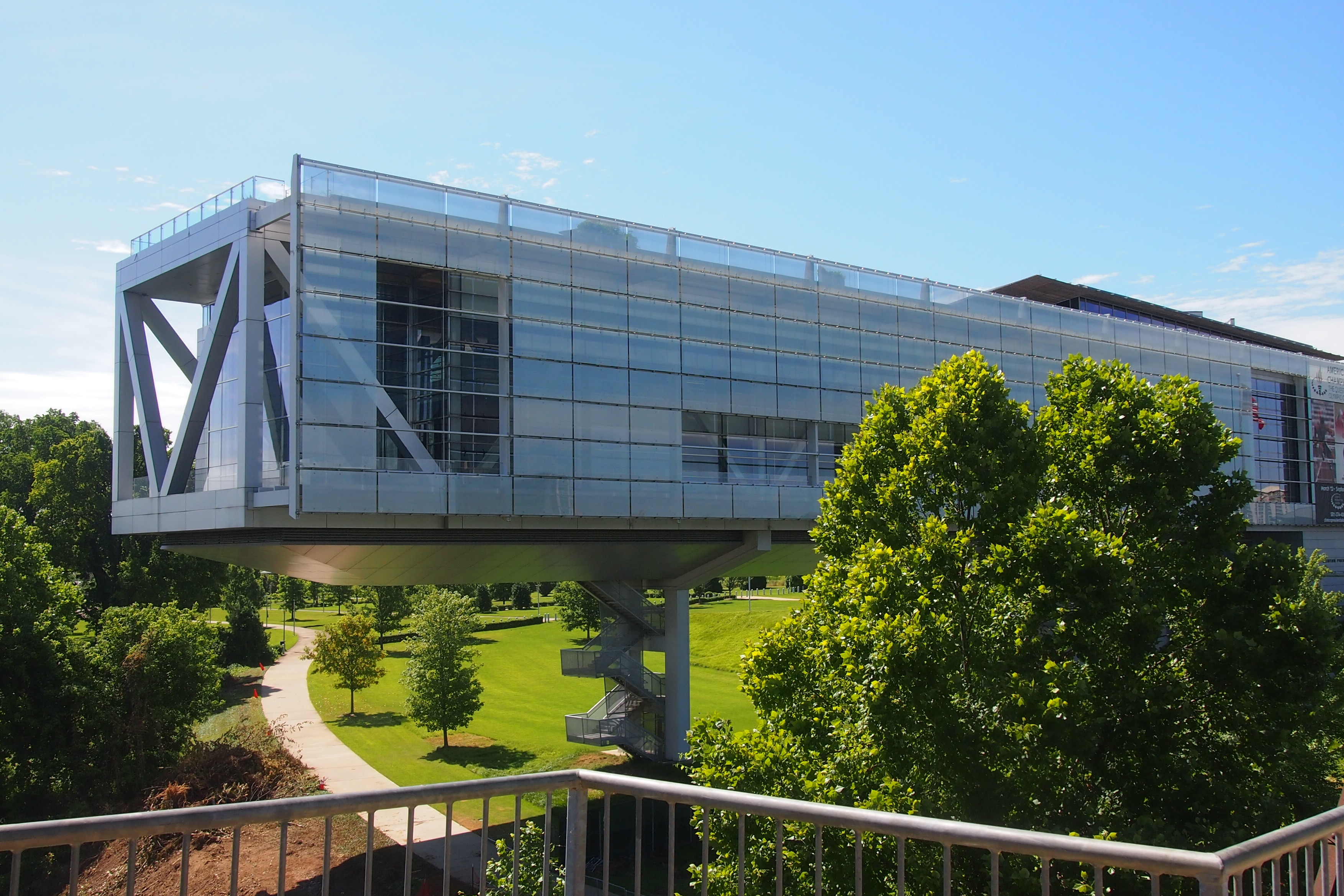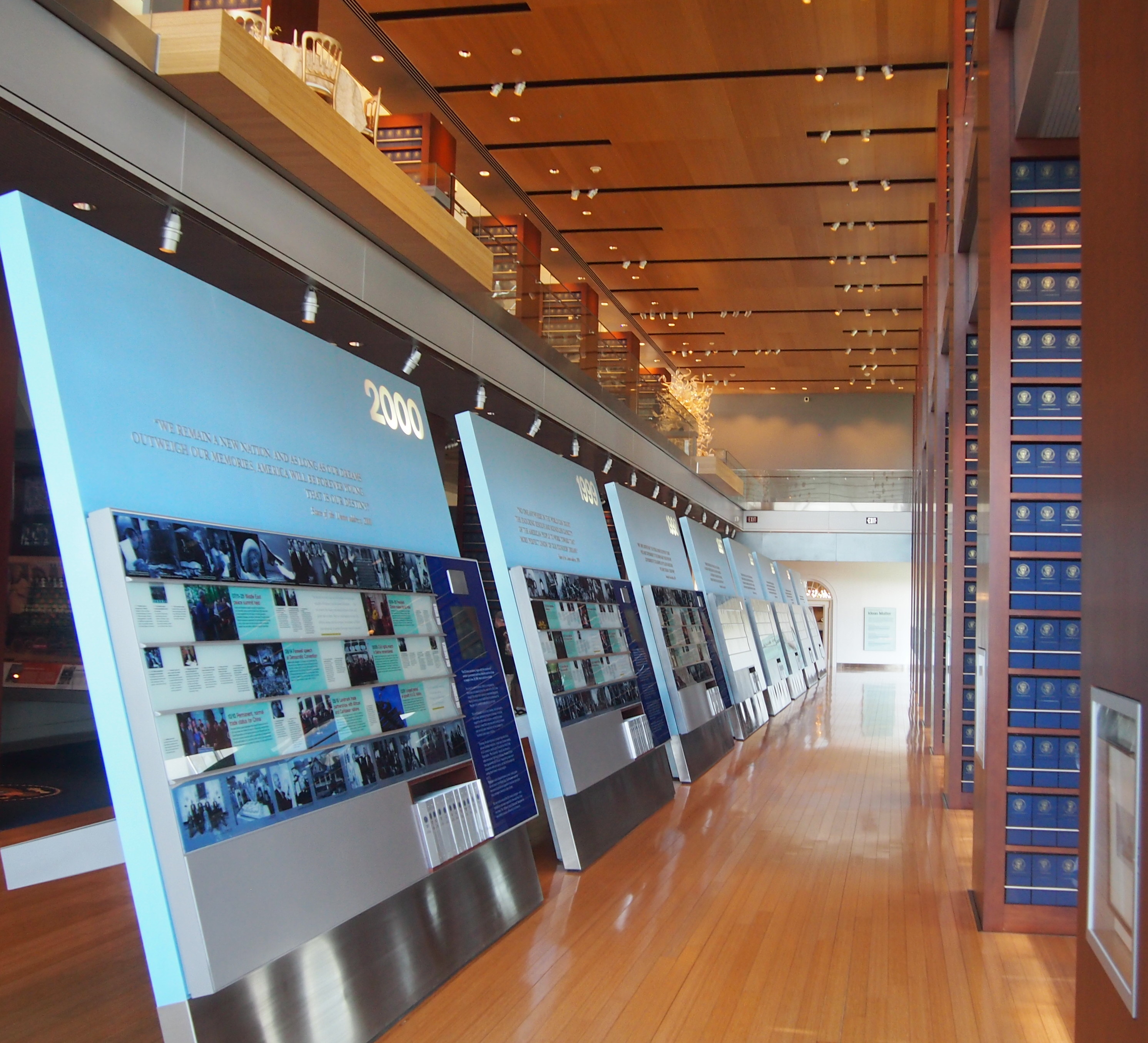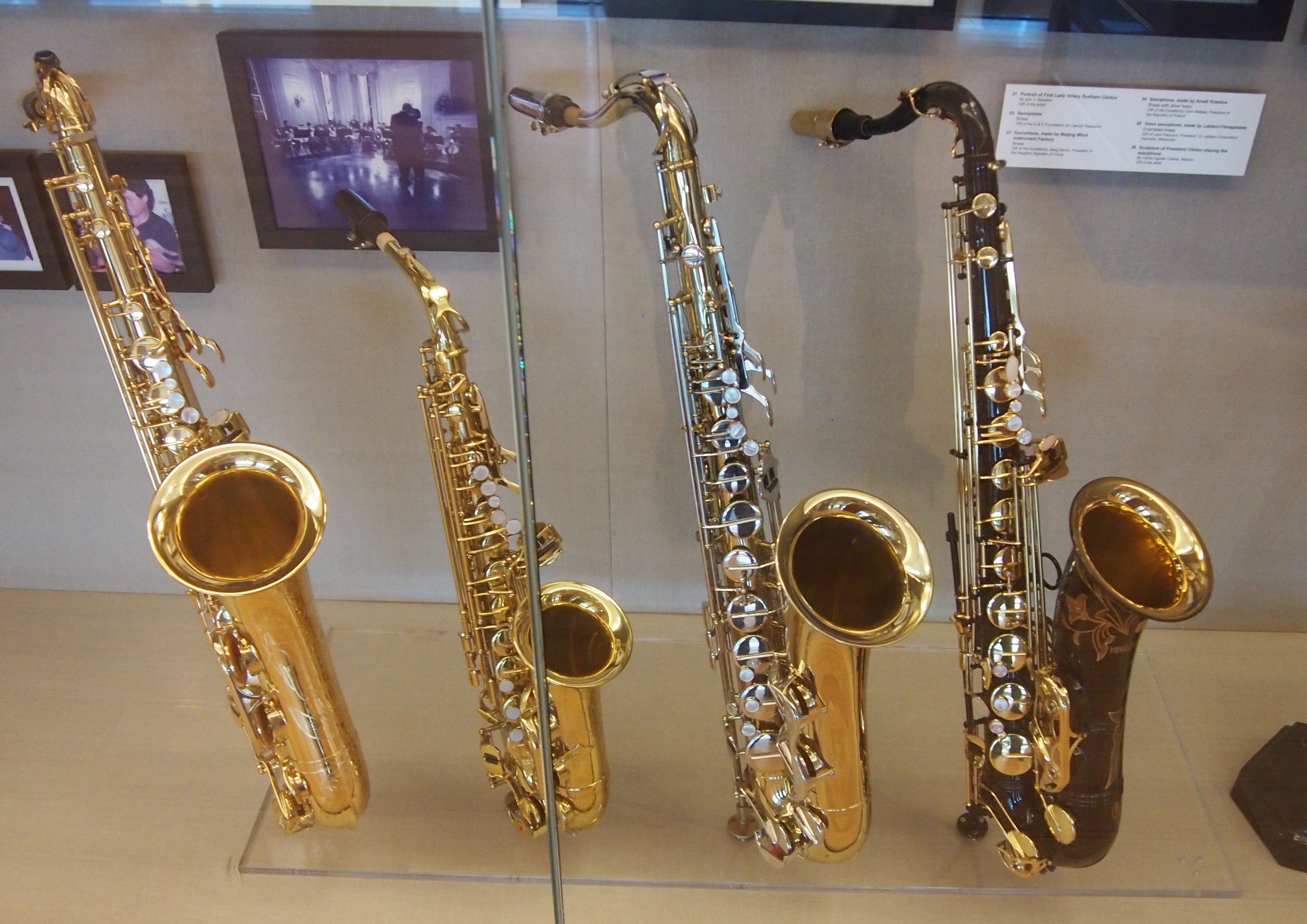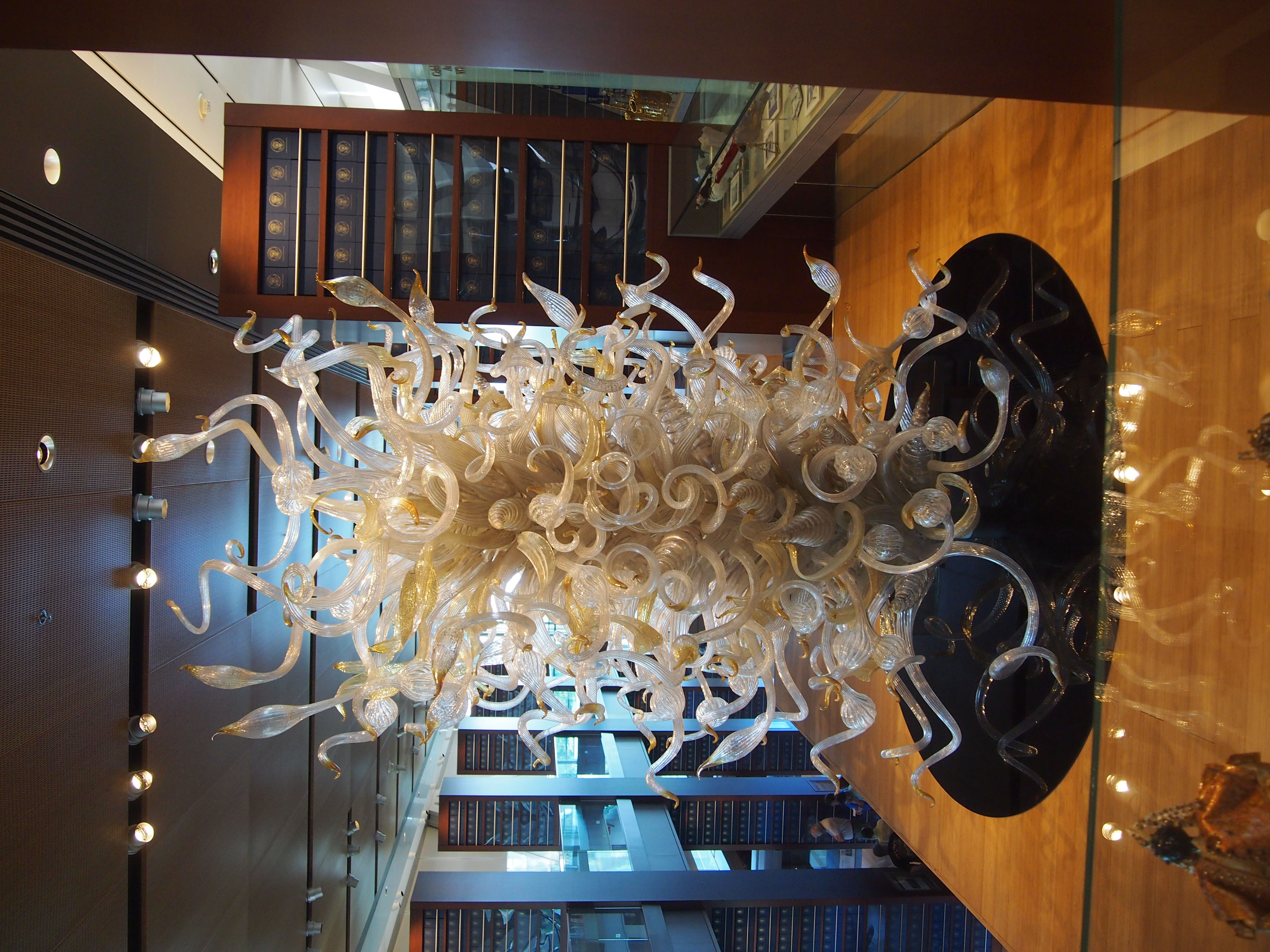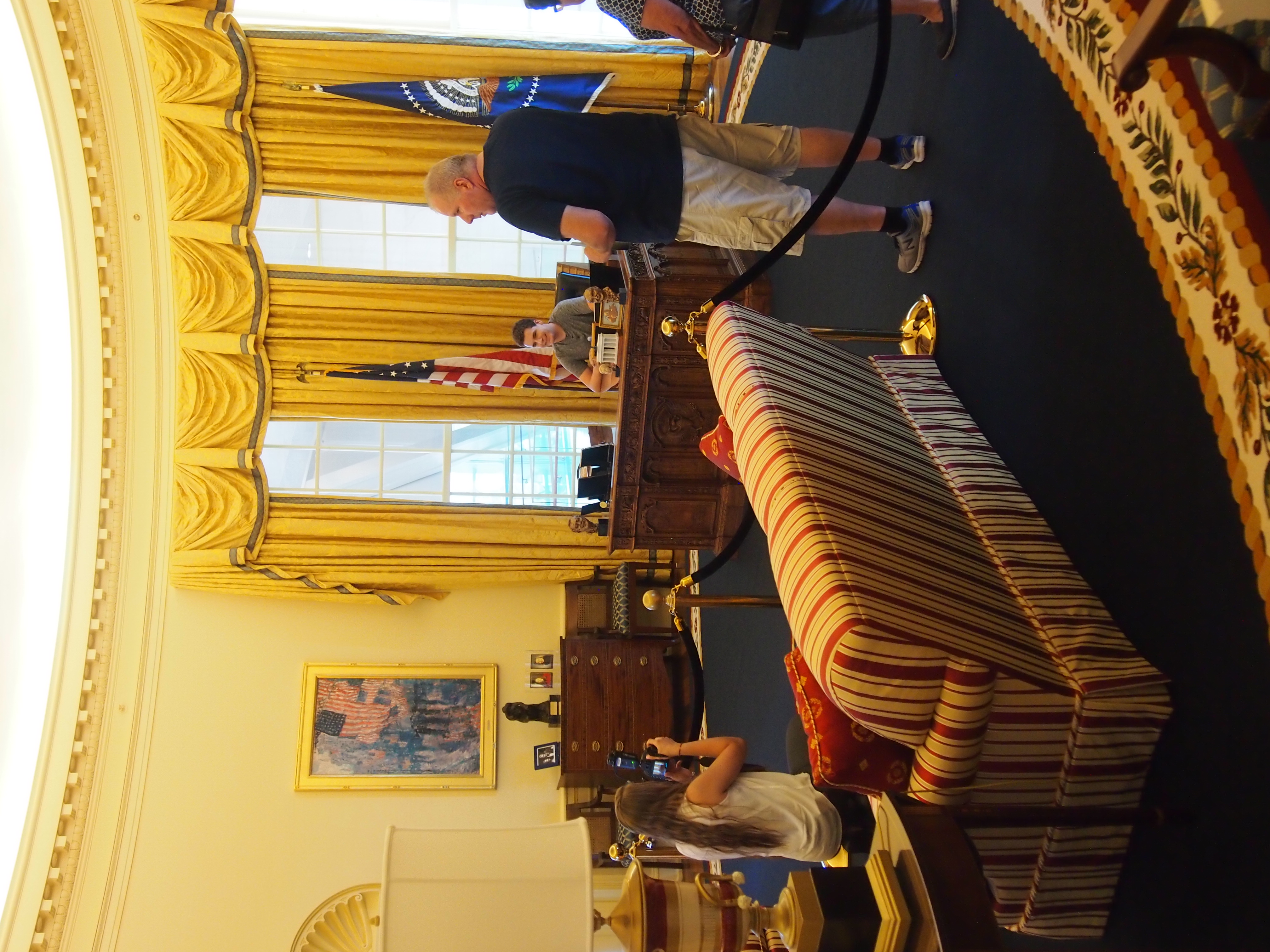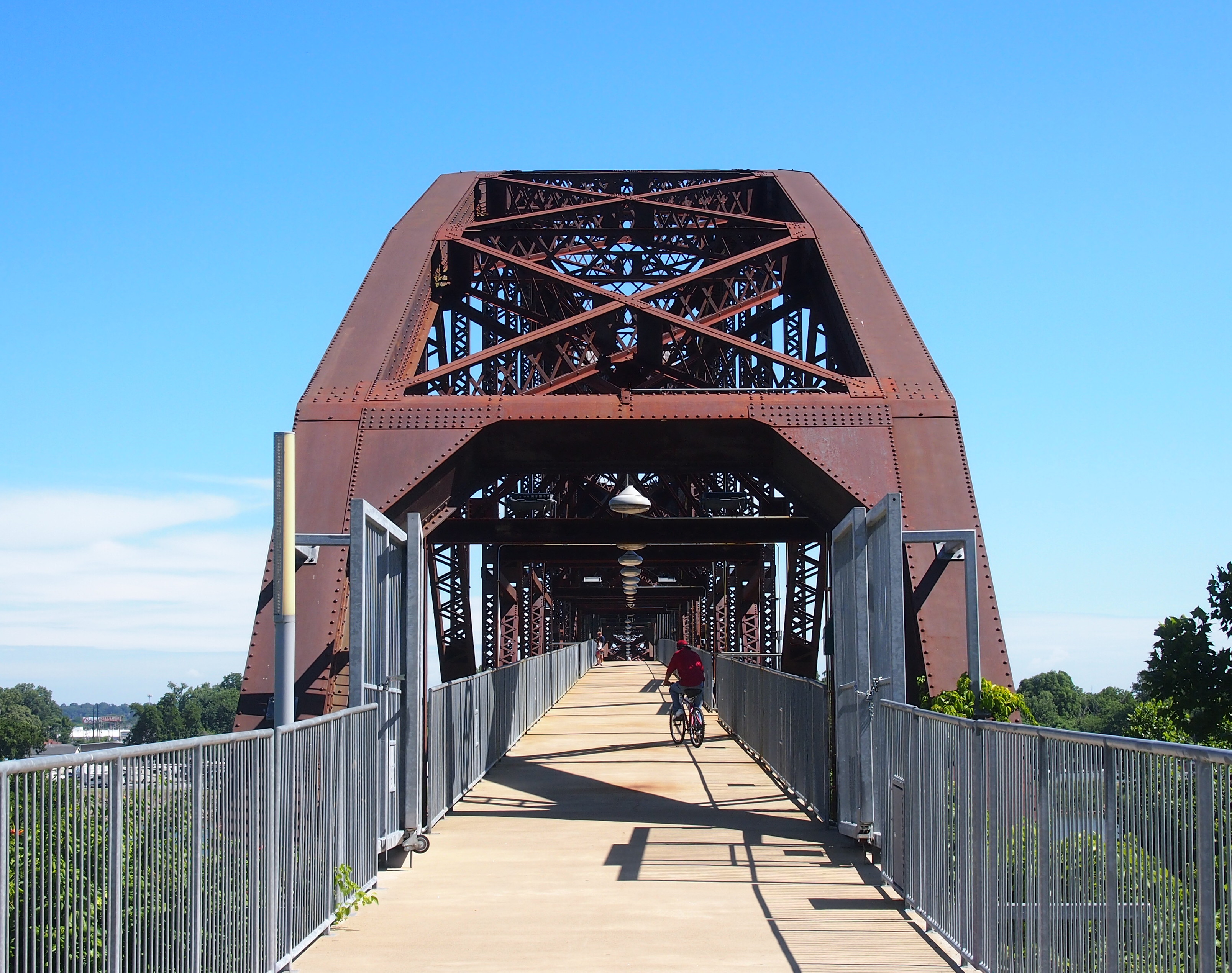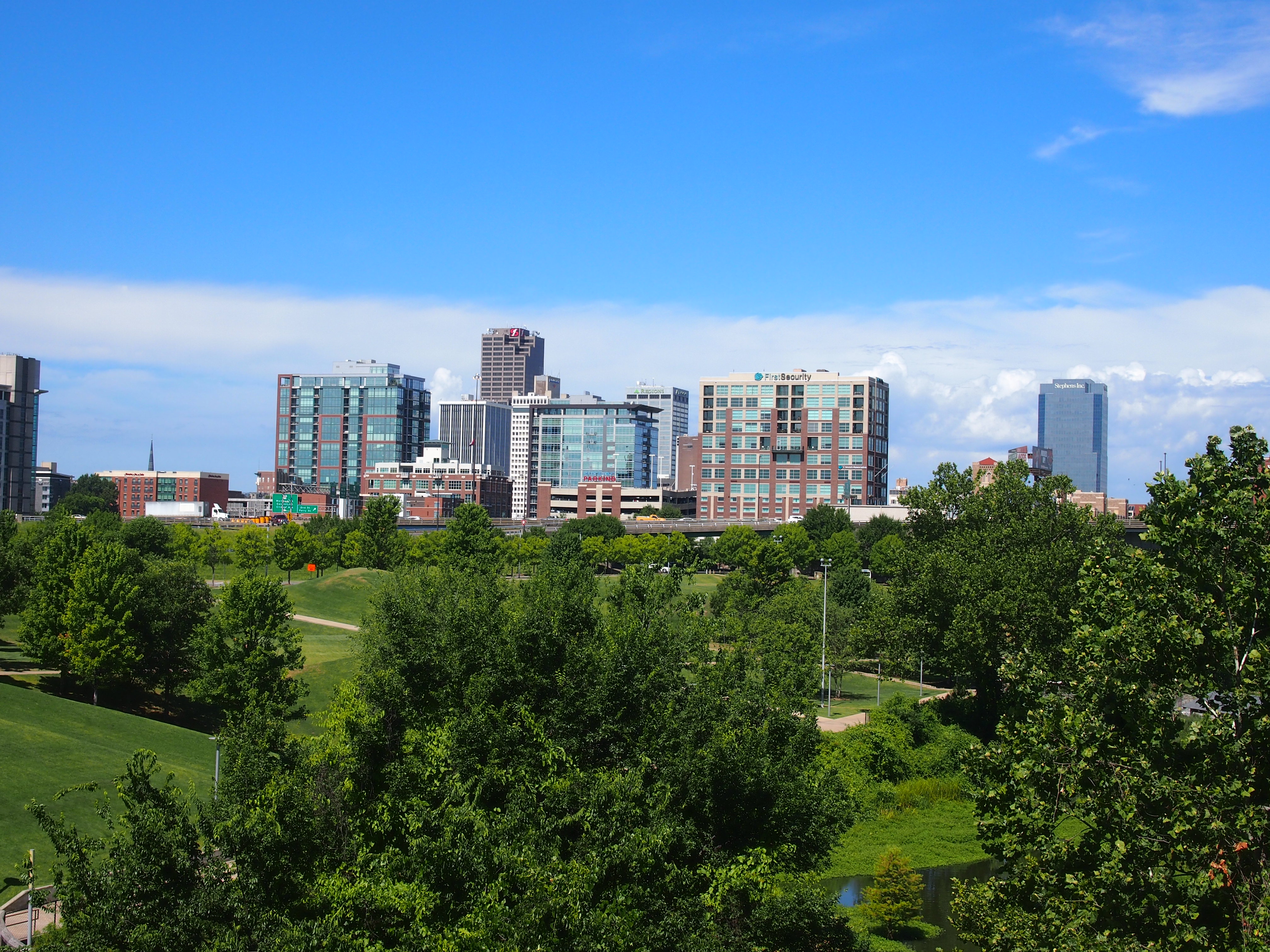“We’re going to see some bears,” I told a groggy Ann as we drove through Nashville on the Saturday morning we were there.
“I don’t want to go to a zoo.”
“Not those kinds of bears.”
These kinds of bears.
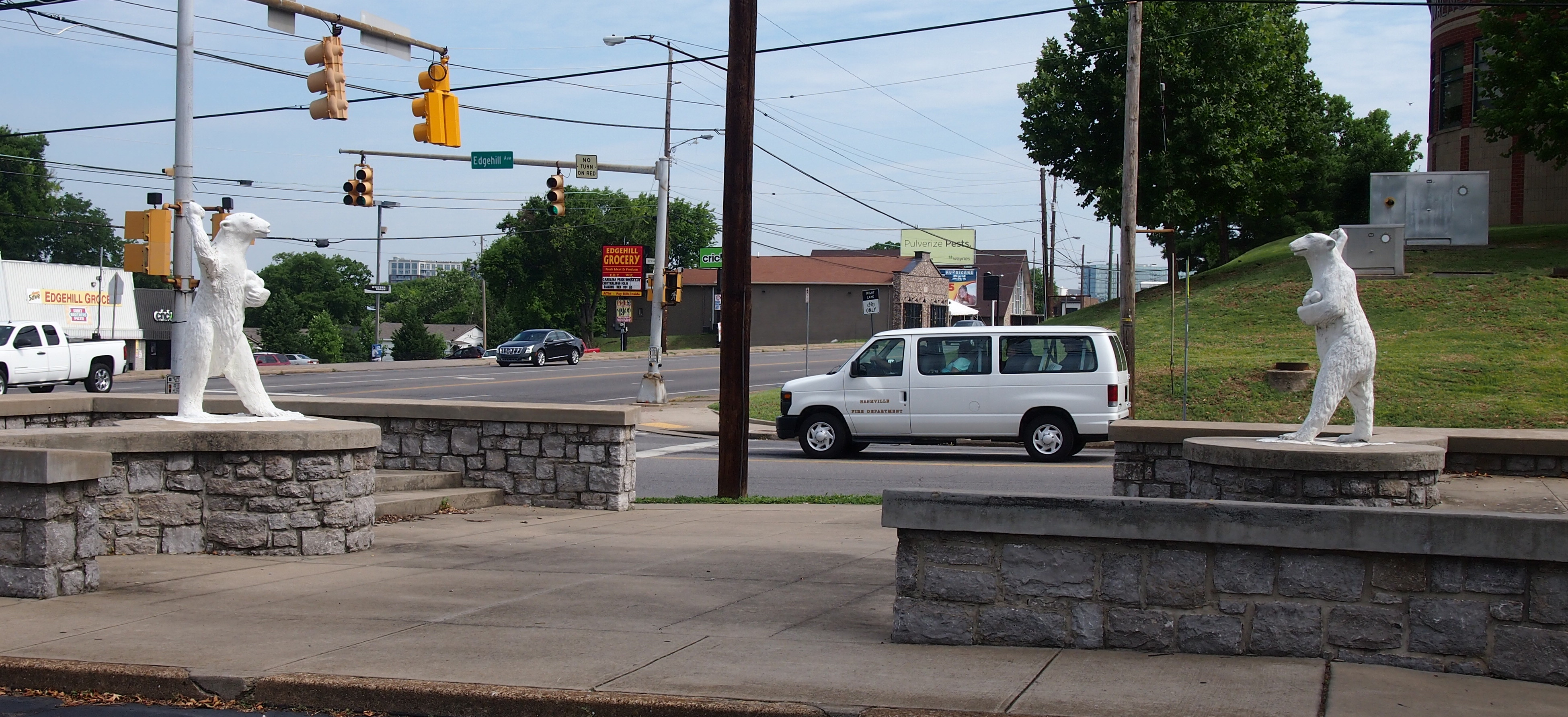 Standing concrete bears, snowballs in hand, ready to toss them. To cut ’n’ paste from the now-defunct Nashville City Paper (March 15, 2004): “The polar bear statues have long been a symbol of the community of Edgehill. They were the creation of the late Gio Vacchino, who owned the Mattei Plaster Relief Ornamental Company around 1930. They were constructed as advertisements for the Polar Bear Frozen Custard shops on Gallatin Road and West End Avenue, which closed after World War II.
Standing concrete bears, snowballs in hand, ready to toss them. To cut ’n’ paste from the now-defunct Nashville City Paper (March 15, 2004): “The polar bear statues have long been a symbol of the community of Edgehill. They were the creation of the late Gio Vacchino, who owned the Mattei Plaster Relief Ornamental Company around 1930. They were constructed as advertisements for the Polar Bear Frozen Custard shops on Gallatin Road and West End Avenue, which closed after World War II.
“Edgehill resident Zema Hill bought the bears and placed them in the neighborhood in the early 1940s. He placed two in front of a funeral home and two in front of his house where they eventually became a symbol and part of the culture of Edgehill. They stood at 1408 Edgehill Ave. for more than 60 years. The two funeral home bears were sold to a North Nashville resident in 1952.”
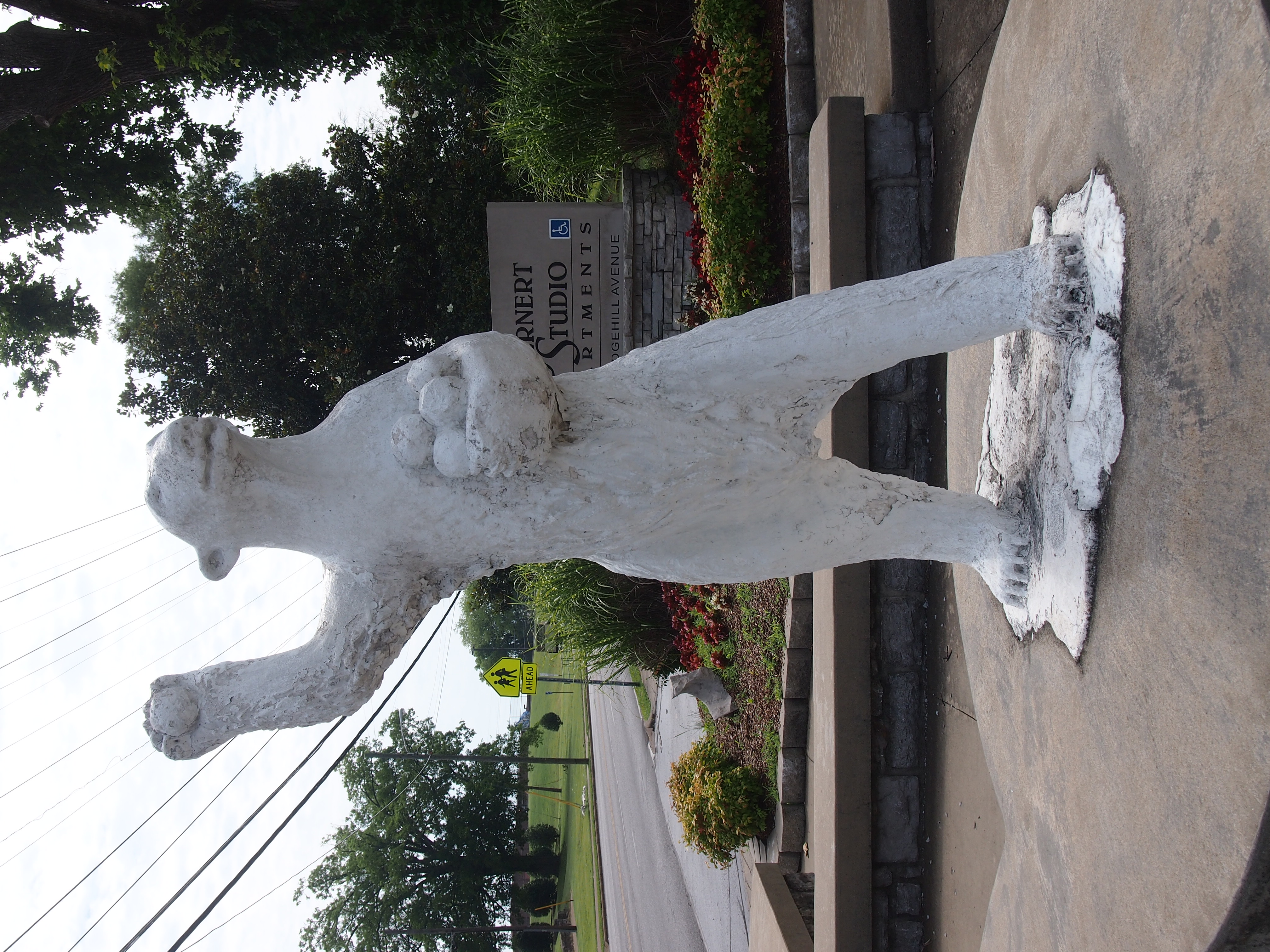
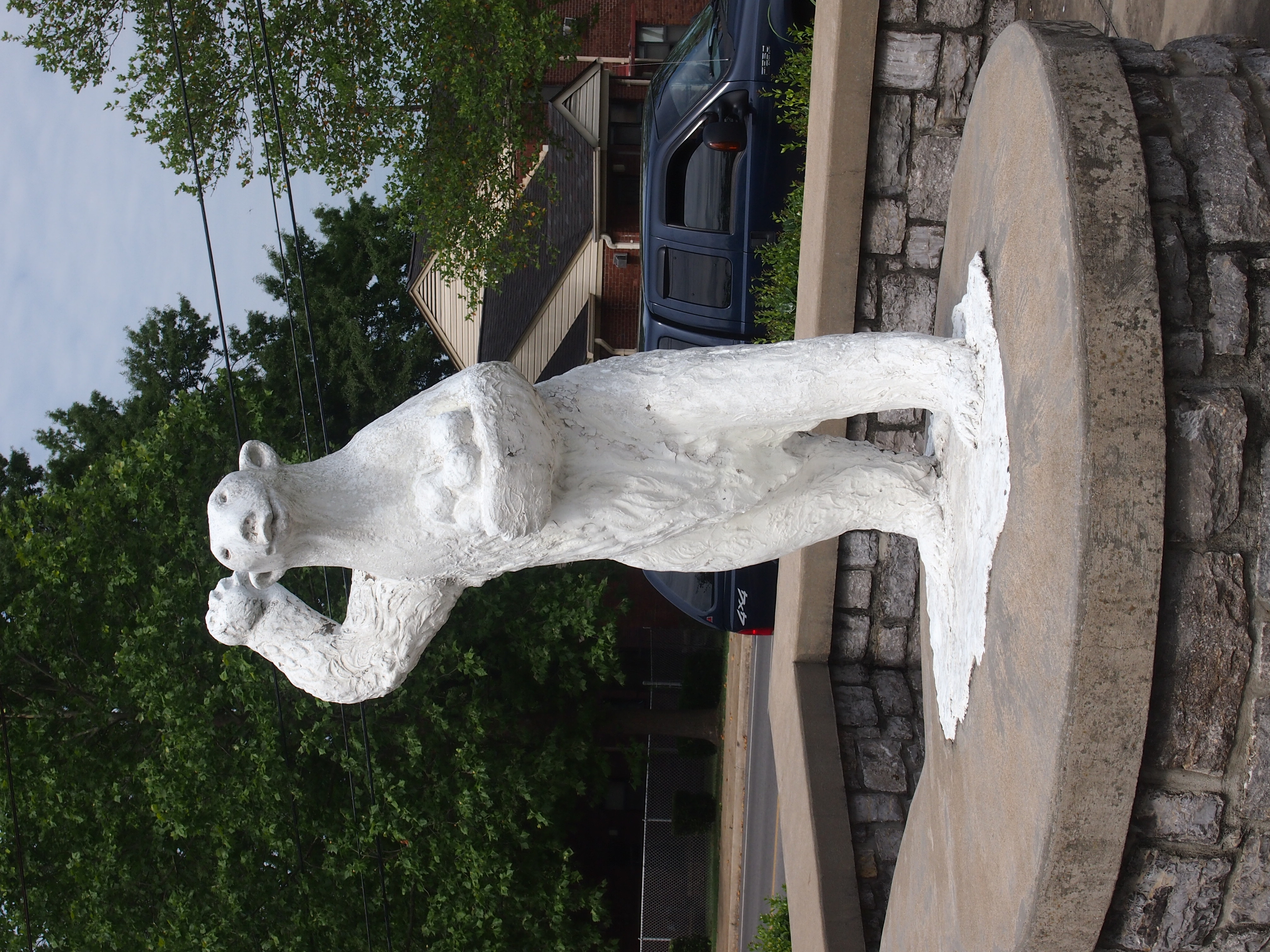 The fate of the funeral home bears remains unknown. The two formerly at 1408 Edgehill – which I used to see frequently, since I lived on Edgehill a few blocks away for a year – are now fixed at the corner of Edgehill and 12th on public property.
The fate of the funeral home bears remains unknown. The two formerly at 1408 Edgehill – which I used to see frequently, since I lived on Edgehill a few blocks away for a year – are now fixed at the corner of Edgehill and 12th on public property.
In Memphis, we made a brief stop to look at some other animals. Living creatures this time, the Peabody Hotel ducks. The two on the right are easy to see, but there were a few others on the left of the fountain in the lobby.
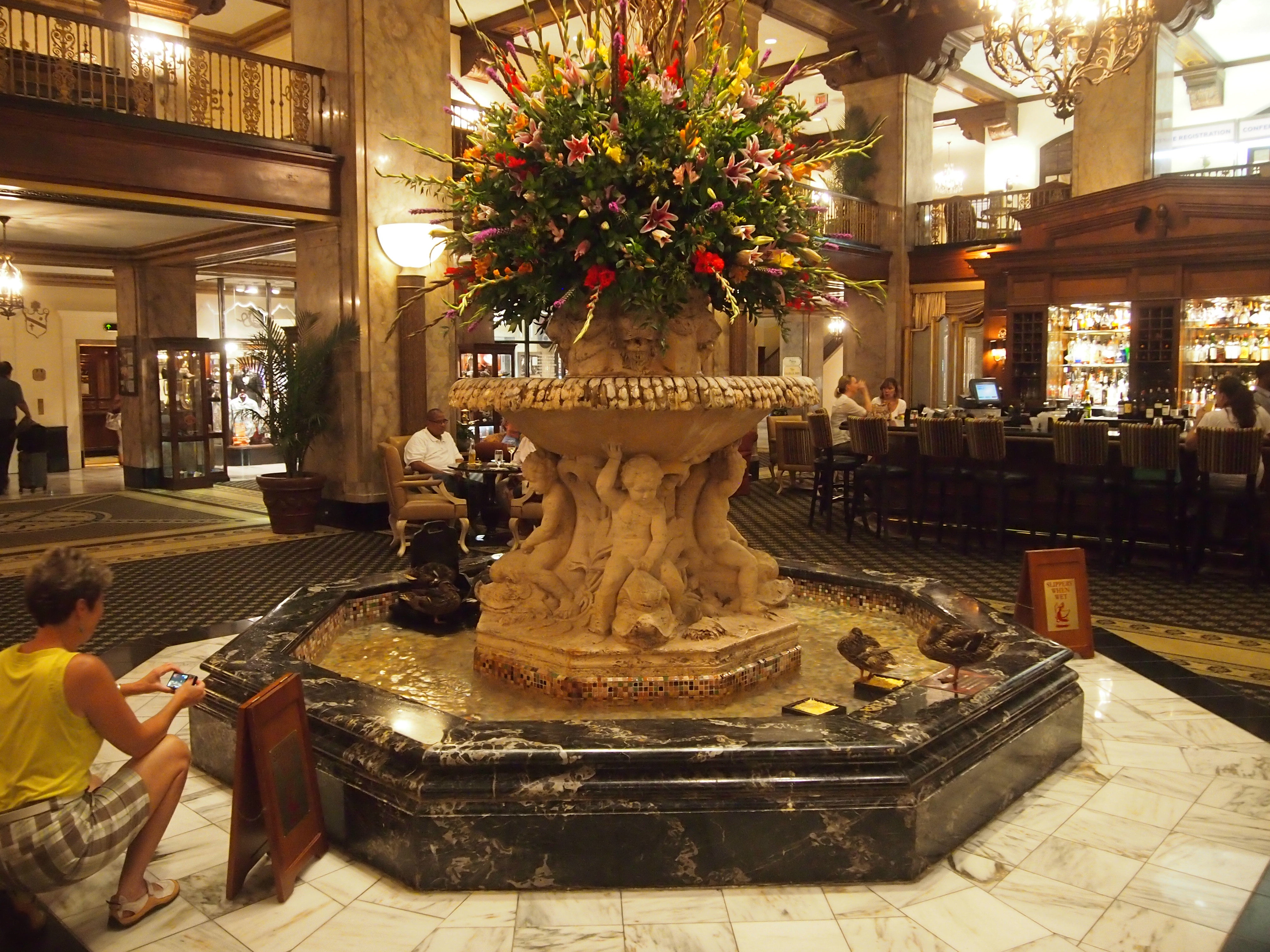 I can’t remember when I first heard about the ducks. Maybe as far back as college. When I knew we’d be passing through Memphis, I checked to make sure they still residing in the hotel lobby fountain. So they are. We didn’t see the ducks march, but we did see the ducks.
I can’t remember when I first heard about the ducks. Maybe as far back as college. When I knew we’d be passing through Memphis, I checked to make sure they still residing in the hotel lobby fountain. So they are. We didn’t see the ducks march, but we did see the ducks.
“How did the tradition of the ducks in The Peabody fountain begin?” the hotel web site asks, and proceeds to answer with a story that’s a little vague, but never mind: “Back in the 1930’s Frank Schutt, General Manager of The Peabody, and a friend Chip Barwick, returned from a weekend hunting trip to Arkansas. The men had a little too much Tennessee sippin’ whiskey, and thought it would be funny to place some of their live duck decoys (it was legal then for hunters to use live decoys) in the beautiful Peabody fountain. Three small English call ducks were selected as ‘guinea pigs,’ and the reaction was nothing short of enthusiastic. Thus began a Peabody tradition which was to become internationally famous.®
“In 1940, Bellman Edward Pembroke, a former circus animal trainer, offered to help with delivering the ducks to the fountain each day and taught them the now-famous Peabody Duck March. Mr. Pembroke became the Peabody Duckmaster, serving in that capacity for 50 years until his retirement in 1991.”
The hotel, true to modern form, is also quick to point out that “raised by a local farmer and a friend of the hotel, each team of Peabody Ducks lives at the hotel for only three months before retiring from their duty and returning to the farm, where they are free to live as wild ducks… the hotel recognizes its resident waterfowl as wild animals and does not domesticate them or treat them like pets.” Good to know.
In Little Rock, we visited the state capitol just before we left town.
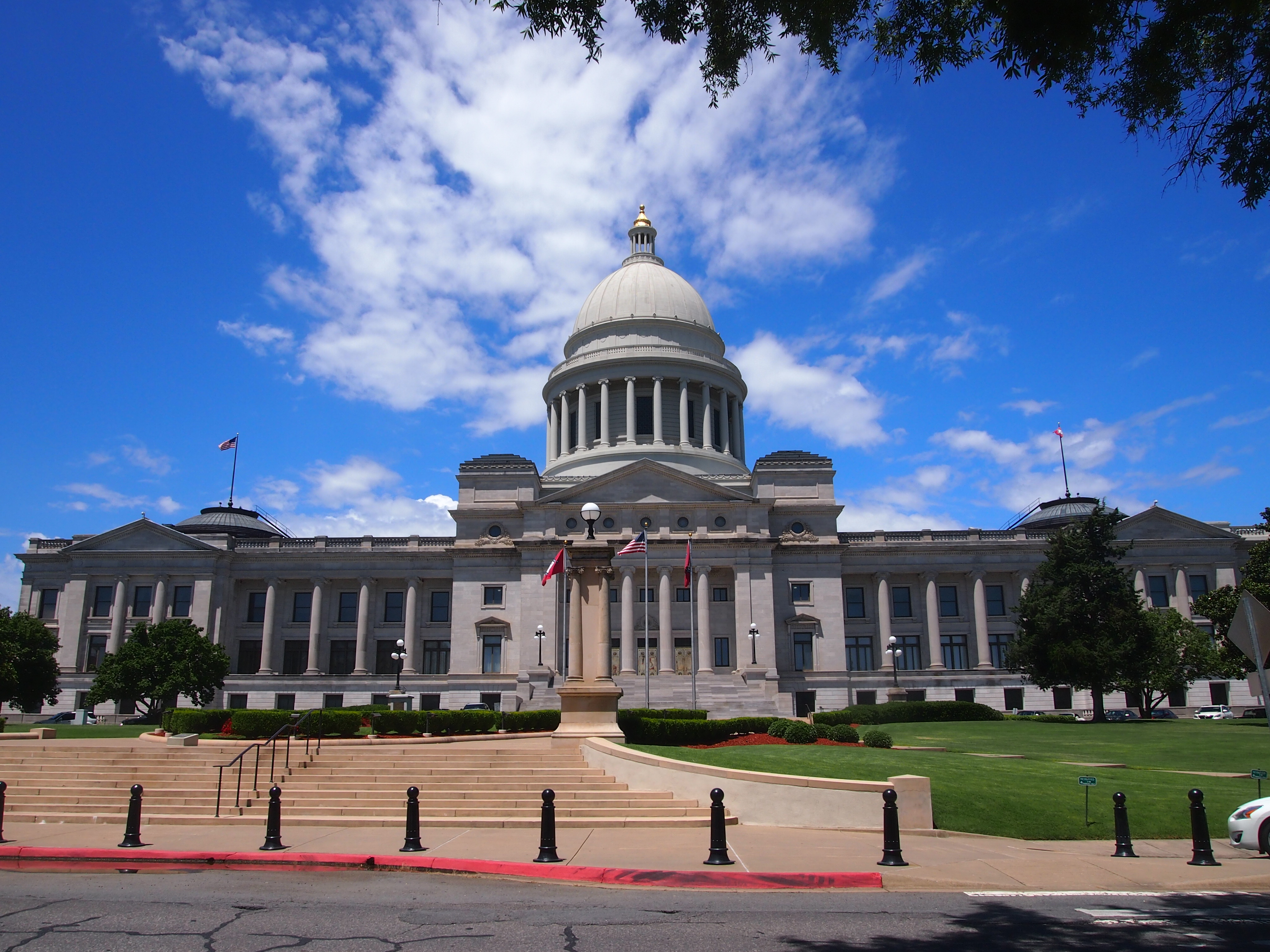 It’s somewhat austere, but I was really taken with the gold-leaf dome interior.
It’s somewhat austere, but I was really taken with the gold-leaf dome interior.
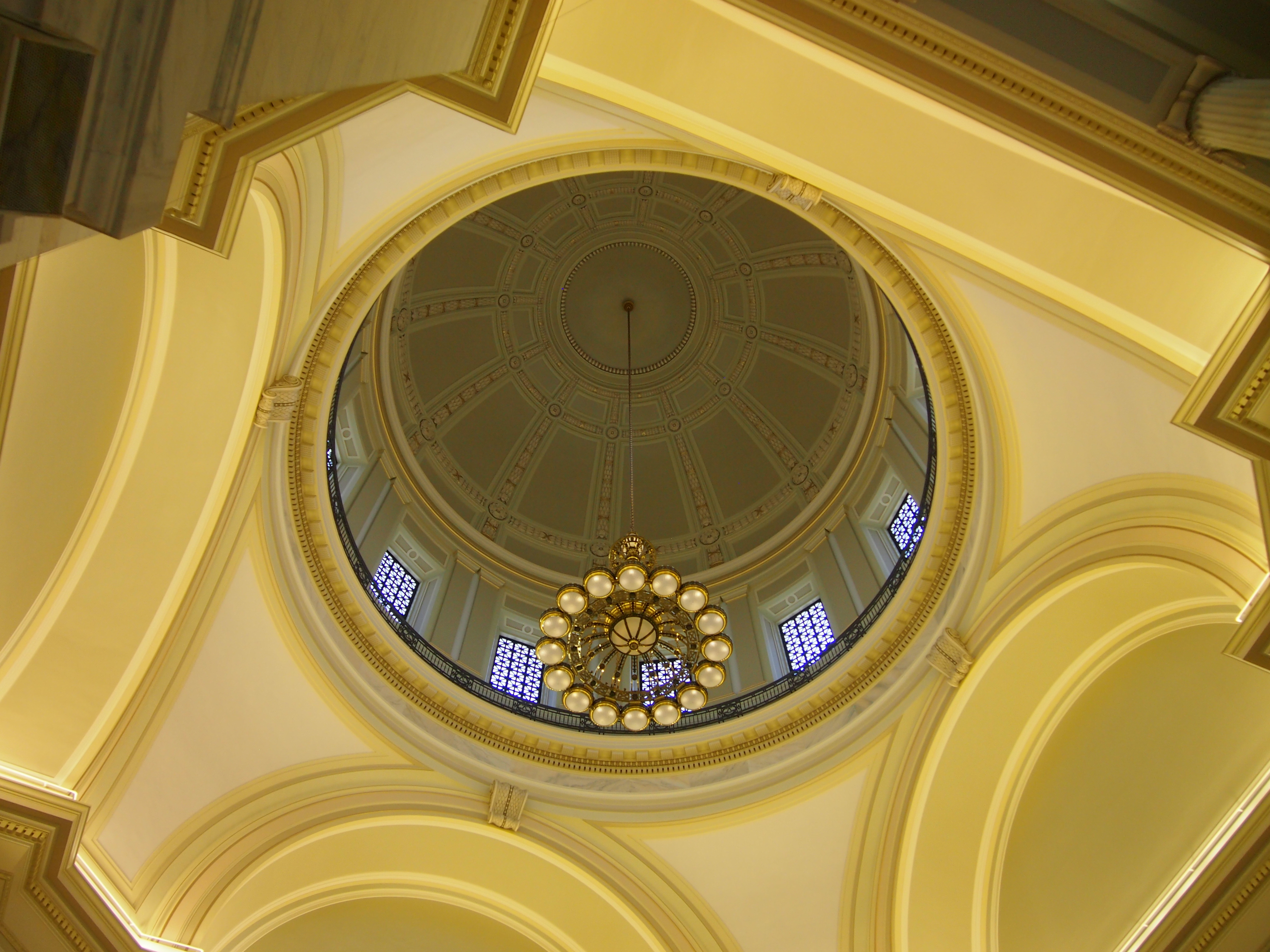 The Cass Gilbert Society notes that “the Arkansas State Capitol, designed and constructed over the course of some eighteen years, was the product of one political investigation, two architects, and three governors…. As executed, the [capitol] is constructed of gray granite with a pedimented entrance section below the dome, flanked by colonnaded wings terminating in pedimented pavilions, each with a shallow dome over the legislative chamber within. The dome rises from a colonnaded drum and is surmounted by a lantern. The building has been characterized as having ‘the transverse stairhalls and the clear articulation in three blocks of Gilbert’s Capitol of Minnesota, but its simplicity is almost raw.’ ”
The Cass Gilbert Society notes that “the Arkansas State Capitol, designed and constructed over the course of some eighteen years, was the product of one political investigation, two architects, and three governors…. As executed, the [capitol] is constructed of gray granite with a pedimented entrance section below the dome, flanked by colonnaded wings terminating in pedimented pavilions, each with a shallow dome over the legislative chamber within. The dome rises from a colonnaded drum and is surmounted by a lantern. The building has been characterized as having ‘the transverse stairhalls and the clear articulation in three blocks of Gilbert’s Capitol of Minnesota, but its simplicity is almost raw.’ ”
In Texarkana, a place I’d only ever passed through, I decided it was high time to drive down State Line Ave. and visit the Texarkana U.S. Post Office and Courthouse. Here’s a shot of the building I took despite the rain, taken while standing on the border, which is helpfully marked on the pavement. A sign also says the location is at LAT 33 25 29.8 N and LONG 94 02 35.2 W.
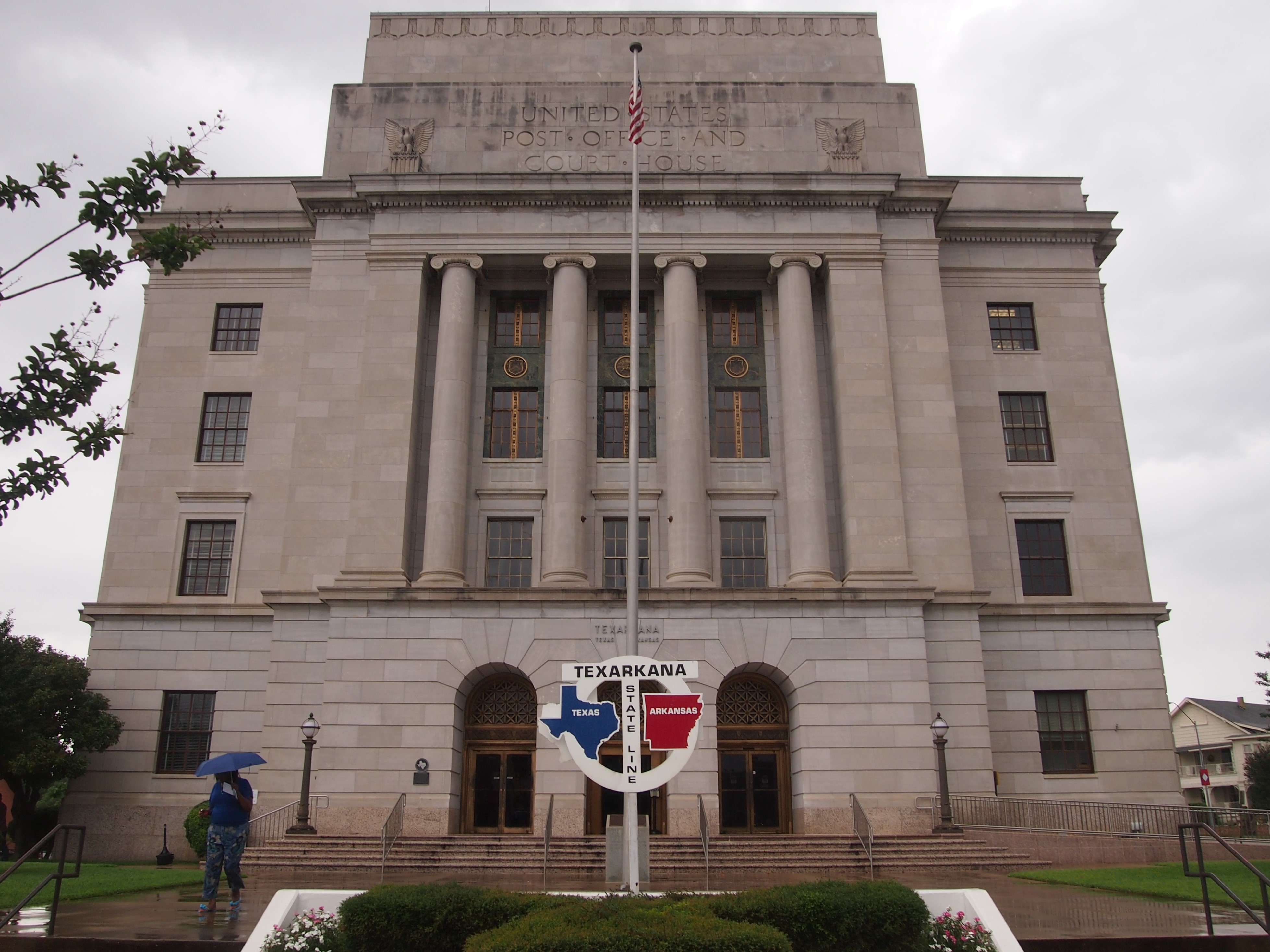 I didn’t need to visit the courthouse, but went through a metal detector on the Texas side and then through a door on the Arkansas side to enter the post office, a wonderful ’30s-style federal facility, complete with brass-plated mail boxes and cages for the tellers. The tellers are on the Arkansas side, the mail slot on the Texas side. I mailed a postcard. Sure, it’s an imaginary line, but I had some fun with it.
I didn’t need to visit the courthouse, but went through a metal detector on the Texas side and then through a door on the Arkansas side to enter the post office, a wonderful ’30s-style federal facility, complete with brass-plated mail boxes and cages for the tellers. The tellers are on the Arkansas side, the mail slot on the Texas side. I mailed a postcard. Sure, it’s an imaginary line, but I had some fun with it.
One strategy when evaluating online reviews is to toss out the very high and very low ratings, something like in competitive gymnastics. Gushing praise may well be a plant, and shrill invective might be from people who would complain about the seat cushions on a lifeboat. Then read other reviews with some skepticism, but not too much. Pretty much like you’d read anything else.
In this way I decided that the Austin Motel in Austin and the Havana Hotel in San Antonio would be reasonably good places to stay for a few days each. Turned out I was right.
The Austin Motel started off as a tourist court in 1938, and while updated (AC, wifi, that kind of thing), it retains some of the old charm, while not costing the moon despite its popular location in SoCo. Everything was basic, but without some of the petty annoyances motels dish up sometimes, such as a squeaking, rattling, noisy air conditioner. It also had some nice touches: a real key on a brass key ring, for instance, but no bottle opener fixed to one of the room surfaces — it needed that.
The motel also features a rusting shell of a car next to its parking lot, vintage late ’30s, now the centerpiece of what looks to be a xeriscape.
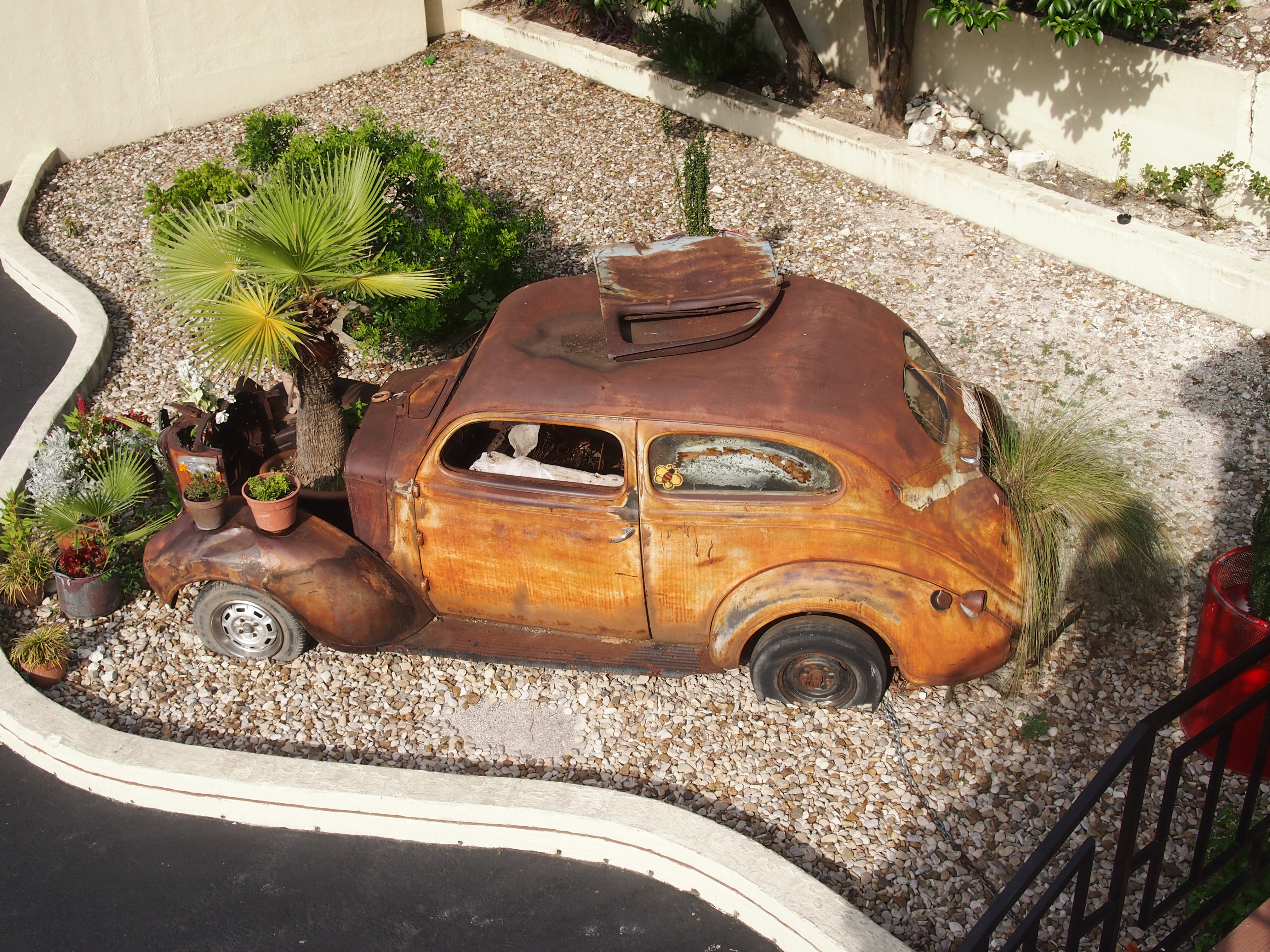 The Havana Hotel has a nice location in downtown San Antonio, near the Riverwalk and the Tobin Center. The property started as a company hotel in 1914 and while modernized (you know, AC, wifi) retains many of the charms of the original design, such as high ceilings and dark woods. Though a little more expensive than the Austin Motel, you got a little more, such as a hip Italian SMEG refrigerator in the room.
The Havana Hotel has a nice location in downtown San Antonio, near the Riverwalk and the Tobin Center. The property started as a company hotel in 1914 and while modernized (you know, AC, wifi) retains many of the charms of the original design, such as high ceilings and dark woods. Though a little more expensive than the Austin Motel, you got a little more, such as a hip Italian SMEG refrigerator in the room.
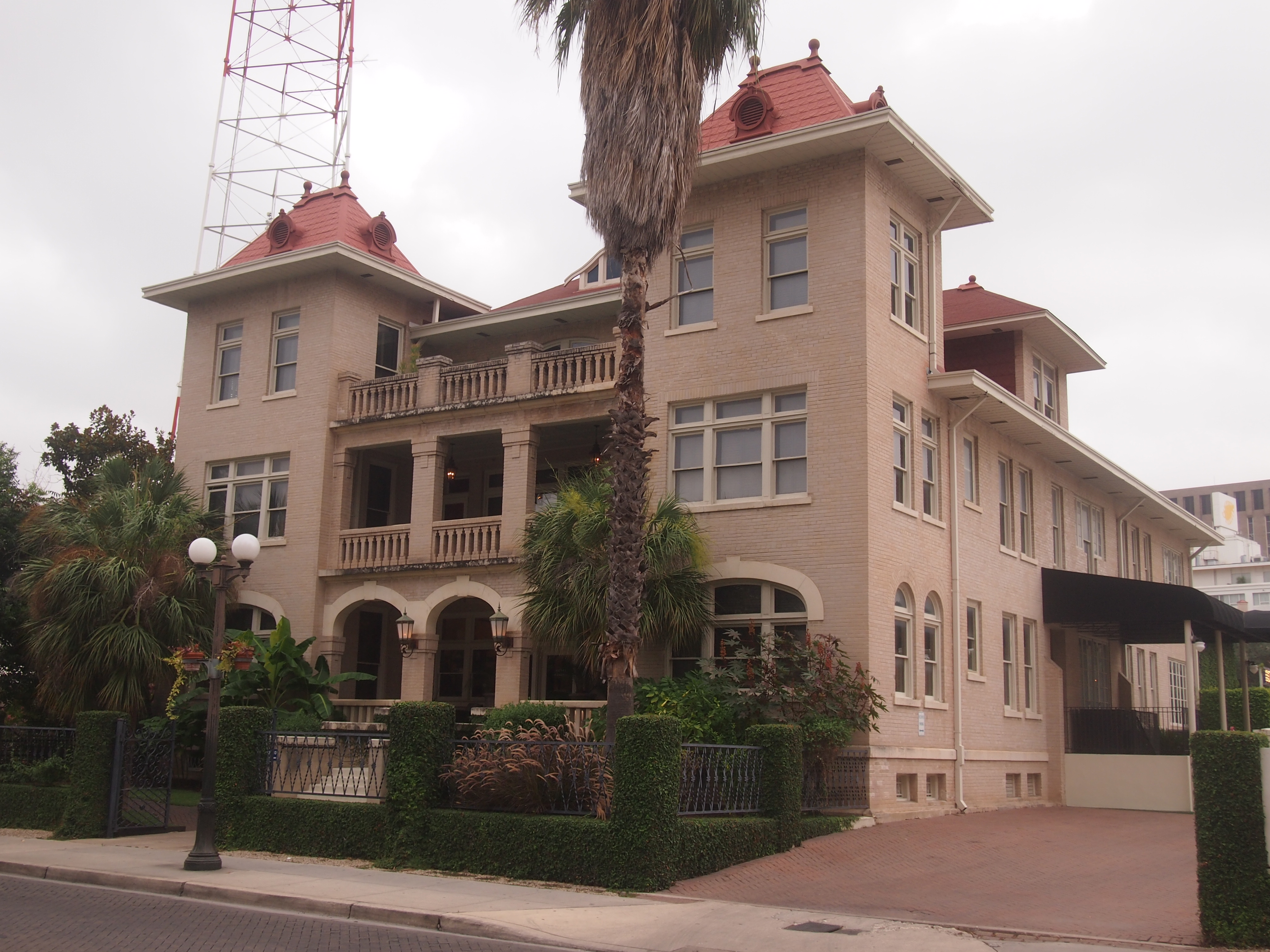 One more thing: the Greetings From Austin mural off funky 1st St. “On the southern exterior wall of Roadhouse Relics, this mural first adorned the neighborhood business in 1998,” writes Cris Mueller in Austinot. “Artist and owner Todd Sanders and his friend Rory Skagen recreated this iconic Austin postcard on the side of the building to add light to a neighborhood that, at the time, was taking a turn for the worst.”
One more thing: the Greetings From Austin mural off funky 1st St. “On the southern exterior wall of Roadhouse Relics, this mural first adorned the neighborhood business in 1998,” writes Cris Mueller in Austinot. “Artist and owner Todd Sanders and his friend Rory Skagen recreated this iconic Austin postcard on the side of the building to add light to a neighborhood that, at the time, was taking a turn for the worst.”
It was renovated in 2013 and looks pretty fresh. Roadhouse Relics, incidentally, sells neon signs. How very Austin.
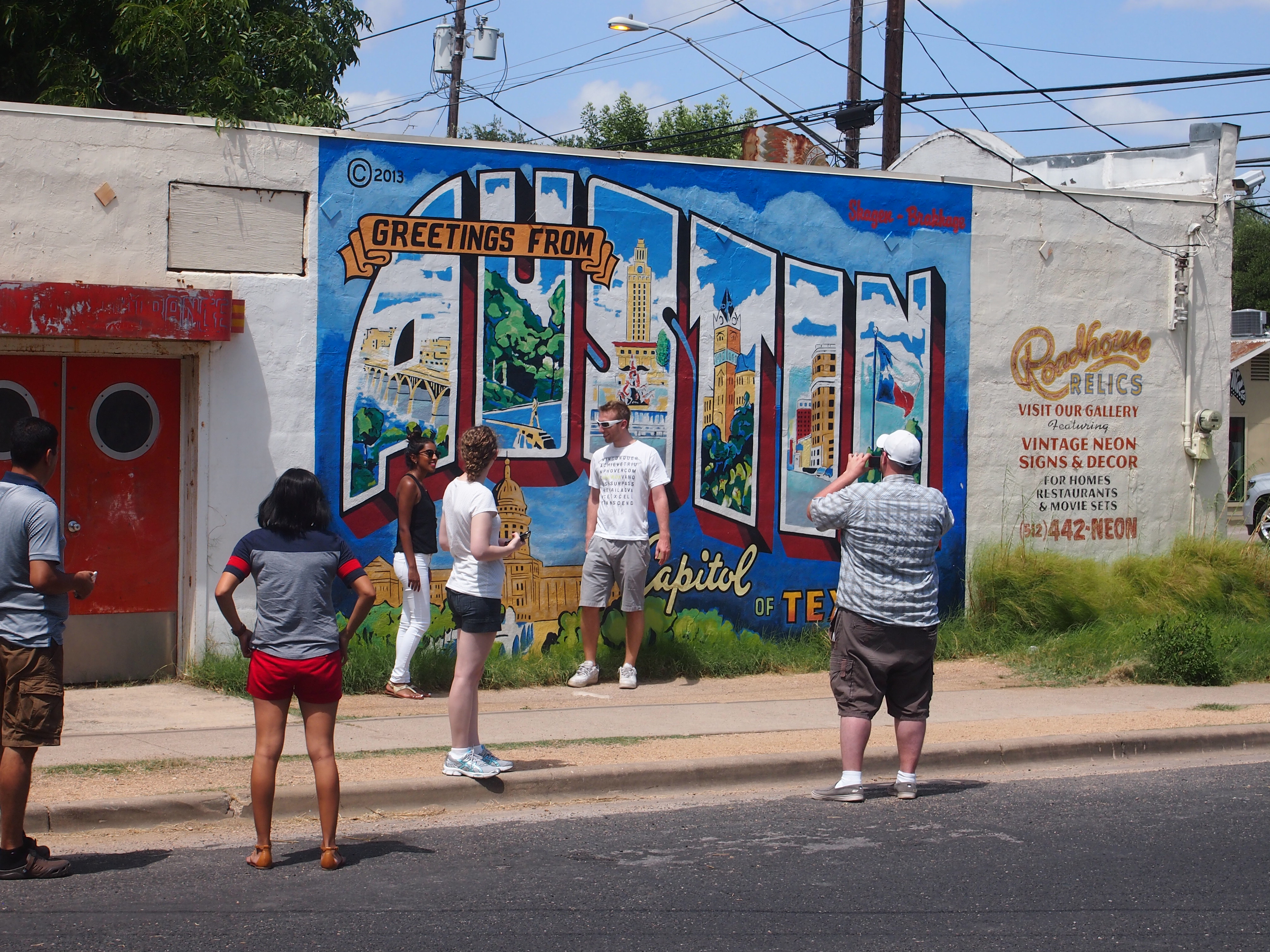 I could have waited until the people had cleared away, but what good would that be? People make the shot more interesting.
I could have waited until the people had cleared away, but what good would that be? People make the shot more interesting.

